Moving Gelatine Plates | Interview
Moving Gelatine Plates was a French progressive rock band first formed in 1968. They are considered as one of France’s finest progressive rock bands.
The band was formed by band leader Didier Thibault (bass) and Gérard Bertram (guitar). Drummer Gérard Pons and multi-instrumentalist Maurice Hemlinger completed the line-up for the band’s first, self-titled album which was released in 1971. Their second album, ‘The World of Genius Hans’ was released under the same line-up in 1972. Didier Thibault reformed the band with different members to release the album ‘Moving’ in 1980. The band reformed again to release a fourth album entitled ‘Removing’ in 2006.
“It’s good, it’s moving, it’s the Moving Gelatine Plates!”
Where and when did you grow up? Was music a big part of your family life?
Didier Thibault: I was born on 07/26/1952 in Paris, and lived in Montparnasse. My father collected records, and he gave me my first record player with Mozart’s ‘La Petite Musique de Nuit’ record, at the age of 6. When I was 8, I came to live in Sartrouville.
When did you begin playing music? What was your first instrument? Who were your major influences?
My parents weren’t very wealthy, but they gave me my first guitar for Christmas 1962 when I was 10 years old. They let me choose between a new coat or a gift of my choice if I agreed to wear my brother’s old coat.
I tried to reproduce everything I heard.
My father gave old 78 rpm records to the Odeon record company so that they could reissue them, in exchange, he received all the new releases every month. Odeon distributed the Beatles, so I received their records as soon as they were released.
In 1966, I met Gérard Bertram in high school, and we very quickly progressed to the guitar and started a group. We started out by playing songs from the Beatles, Rolling Stones, Jimi Hendrix and rock and blues bands from that era.
This first group was called “The Lines”. The first concerts (in 1967) took place in the high school gymnasium, with the pretext of the campaign against hunger in Bangladesh (yes, well before “We are the World” or “Ethiopia”.)
We started to compose our own music very quickly after forming the band, and our musical tastes were oriented towards progressive rock and the “Canterbury” style: Pink Floyd, Soft Machine, King Crimson , Gentle Giant, The Mothers of Invention …
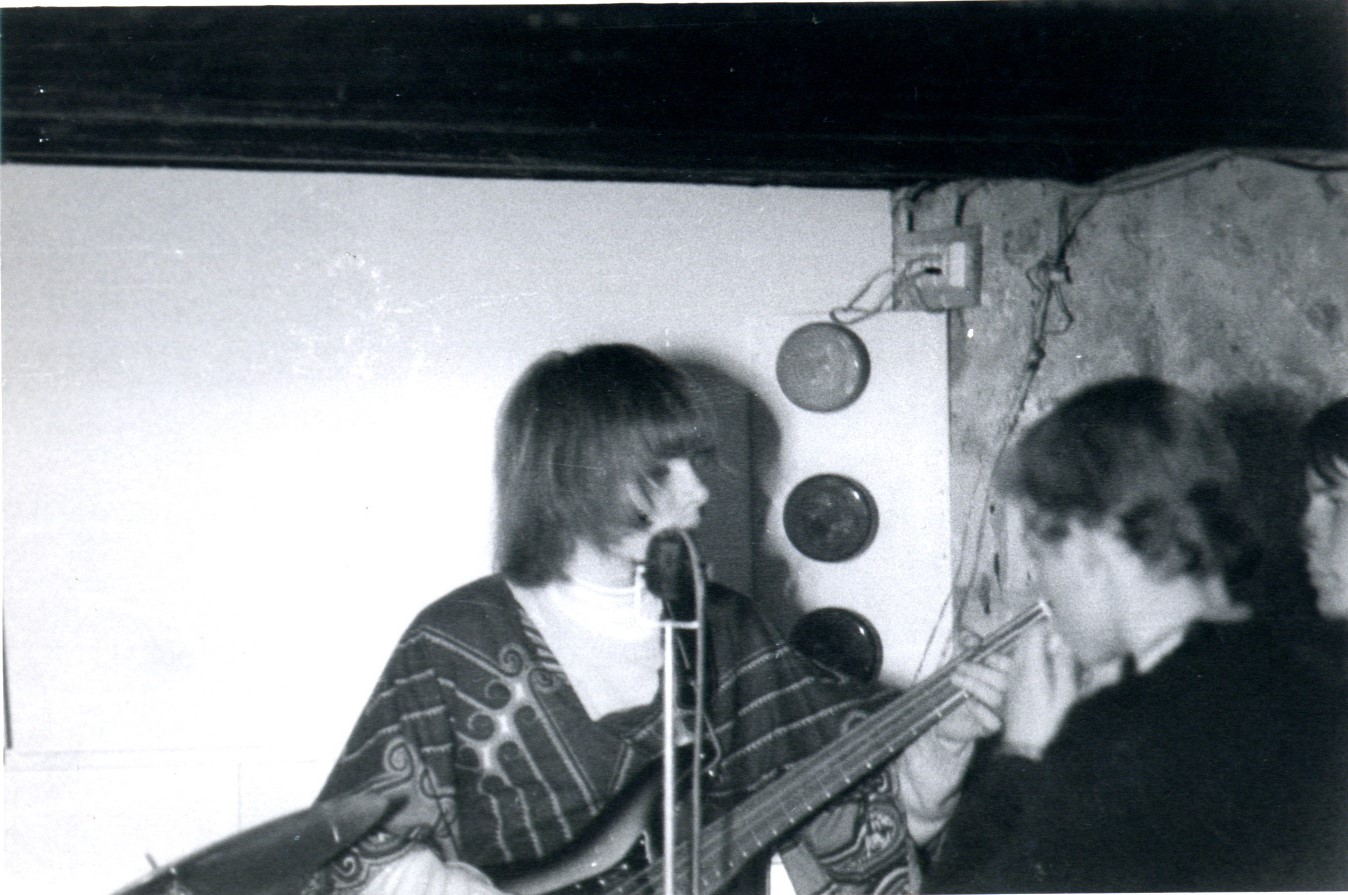
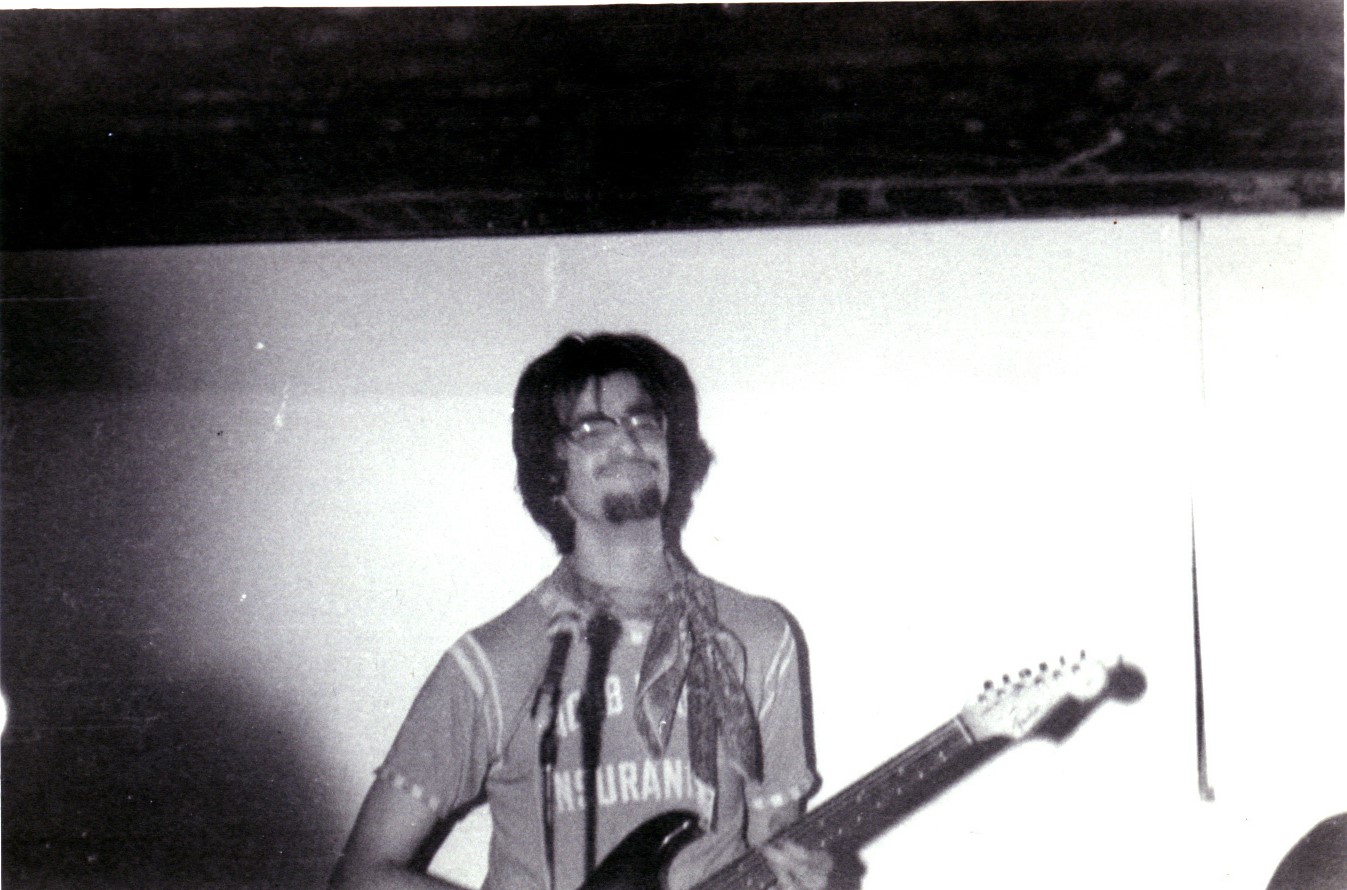
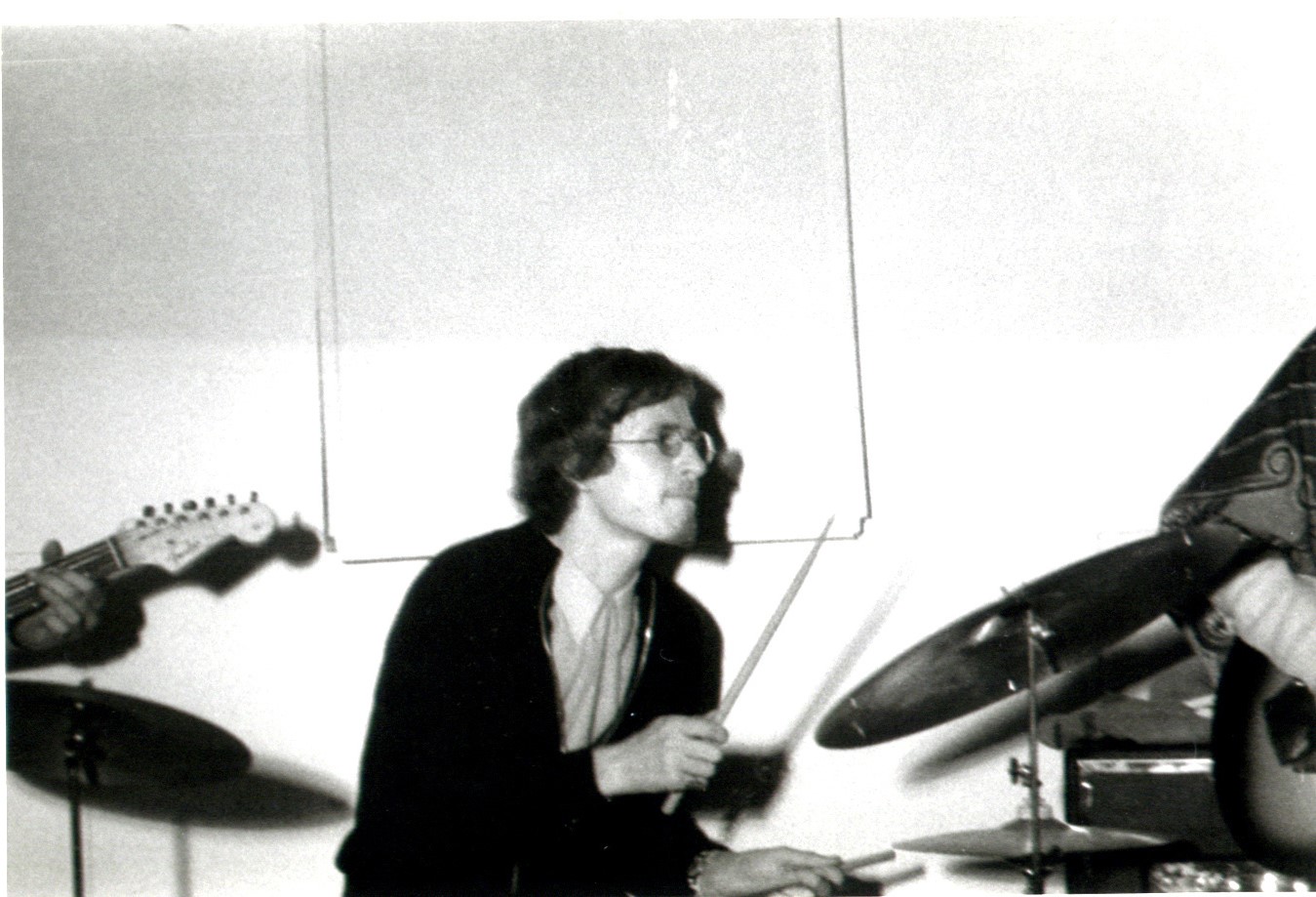
Can you elaborate on the formation of Moving Gelatine Plates?
We were first a trio: Gérard Bertram (bass & guitar), Michel Coulon (drums) and me (bass and guitar).
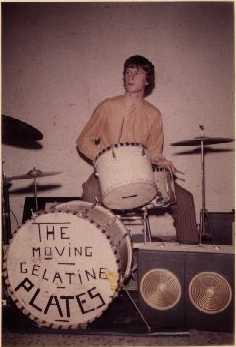
Michel quickly left the group for family reasons. One day, attending the MJC (Maison des Jeunes et de la Culture) in Sartrouville at a rehearsal for a hard rock group, I got to know Gérard Pons who did not make the business because the guitarist-leader of the group found that he was not hitting hard enough!!!
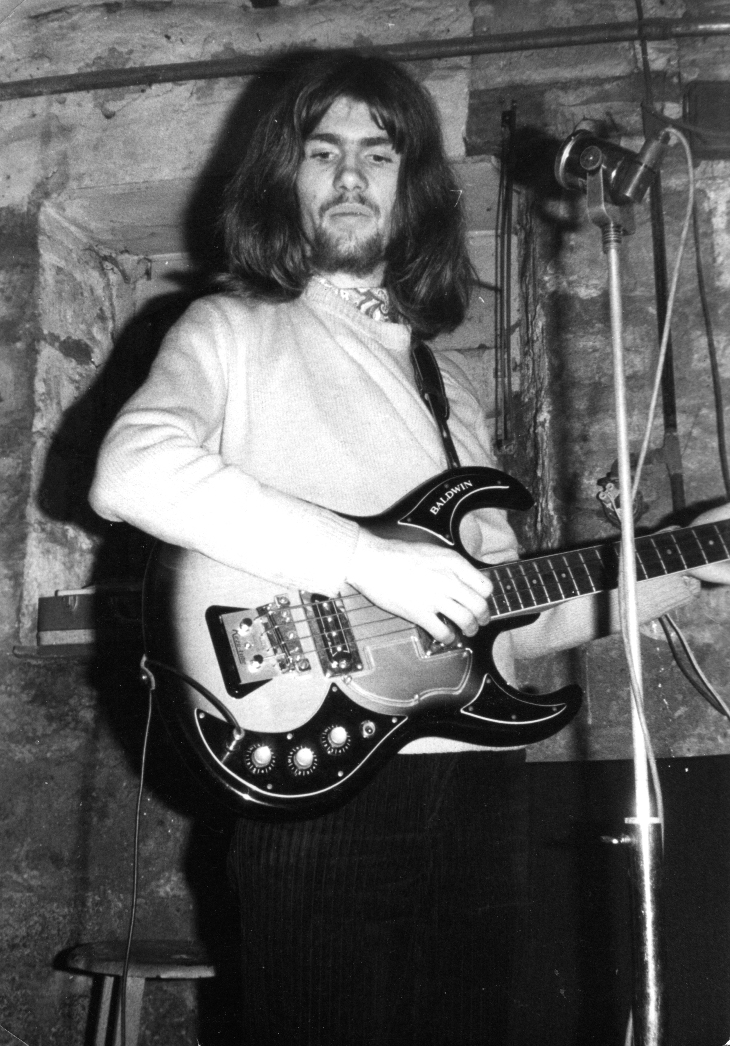
He was a pupil of Kenny Clark, his impressive technique was ideal for MGP [Moving Gelatine Plates] music. The rehearsals then became more serious, and Maurice Helmlinger, friend of Gérard Bertram, came to pass…
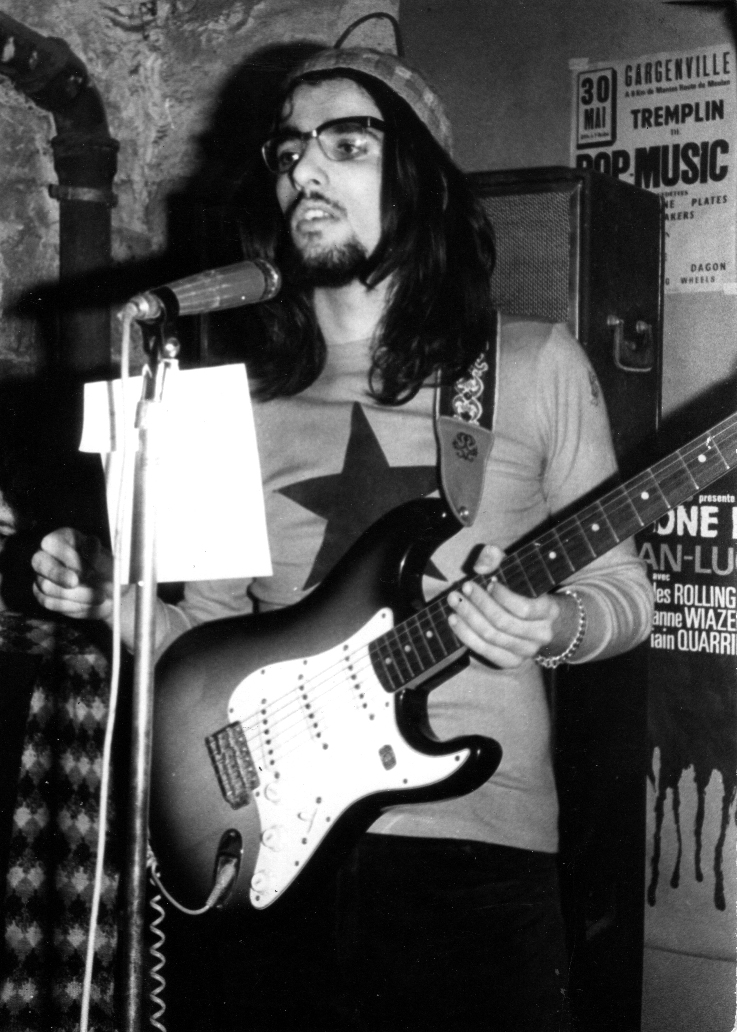
He played in a ballroom orchestra which was kind enough to lend equipment to MGP (amplifiers, sound system…). Very interested in this type of music and a little jaded of the “baloche”, he was therefore the fourth member of the group. A versatile musician, he largely completed the training on his own by playing sax (tenor, alto, soprano), flute, trumpet and organ. He also played the accordion but we avoided using it…
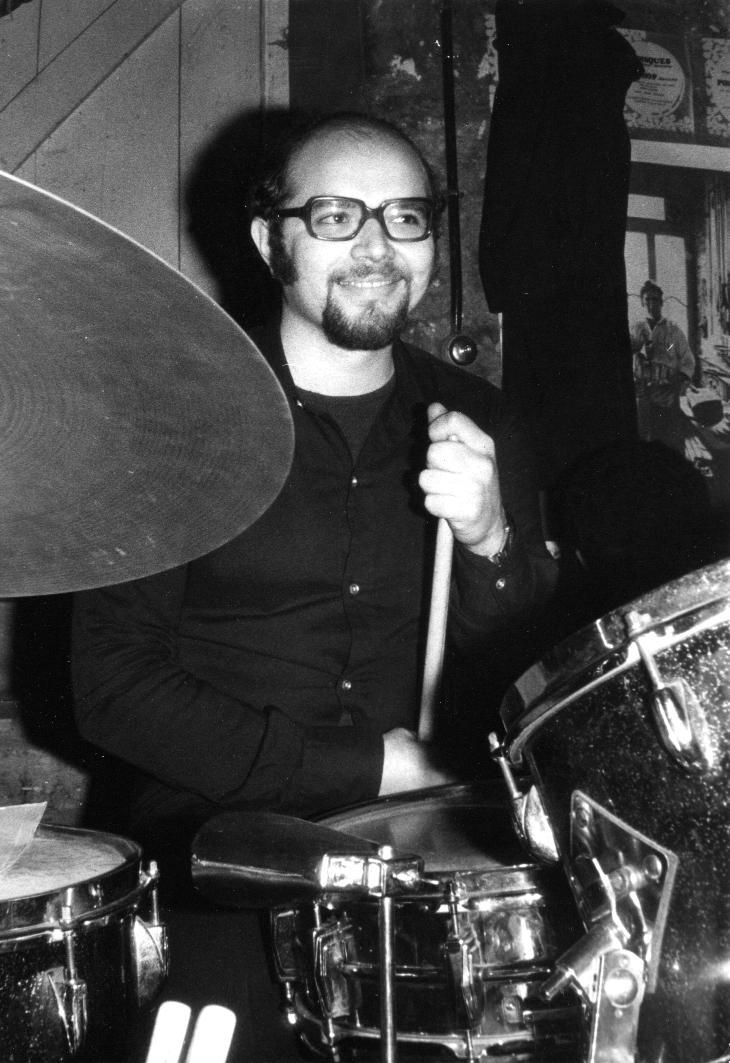
When and where did Moving Gelatine Plates play their first gig? Do you remember the first song the band played? How was the band accepted by the audience?
MGP’s first concert took place at the MJC in Sartrouville on March 7, 1970, with 250 people in the hall and almost as many outside… On the poster announcing the concert (free), was written: “It’s good, it’s moving, it’s the Moving Gelatine Plates!”
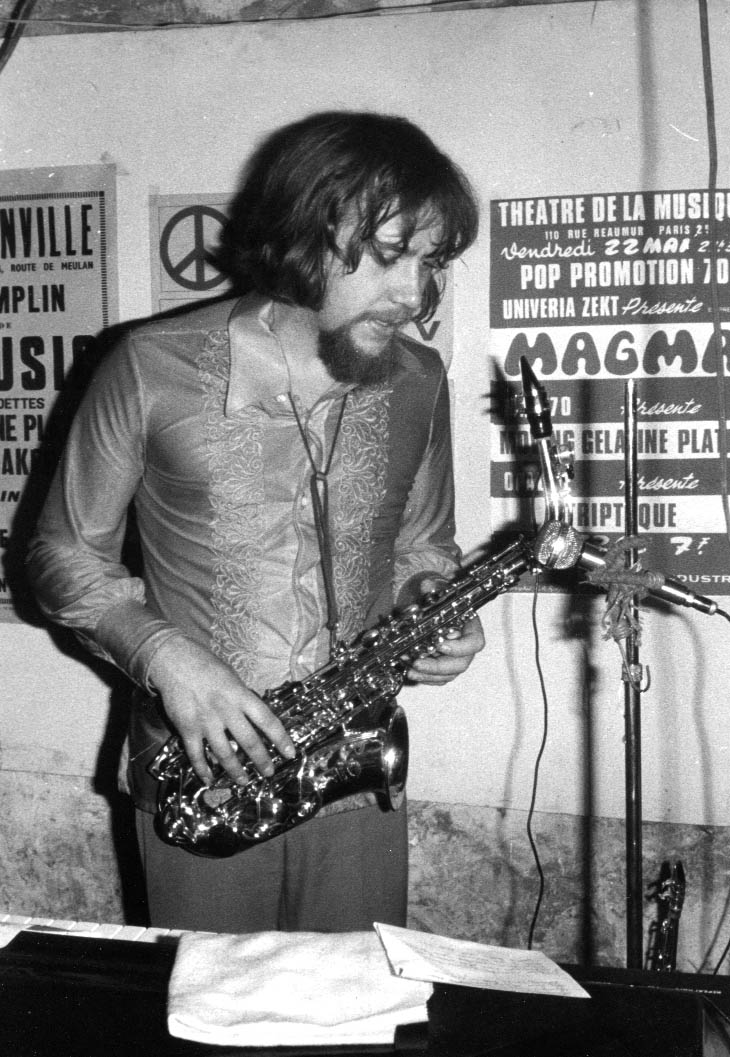
It was in fact a test, because the group had just finished composing 1 hour 30 of music. The welcome was more than warm, even if this style of music left the audience a little disconcerted. People weren’t very used to changes of rhythm, compound bars and certain “dissonances”.
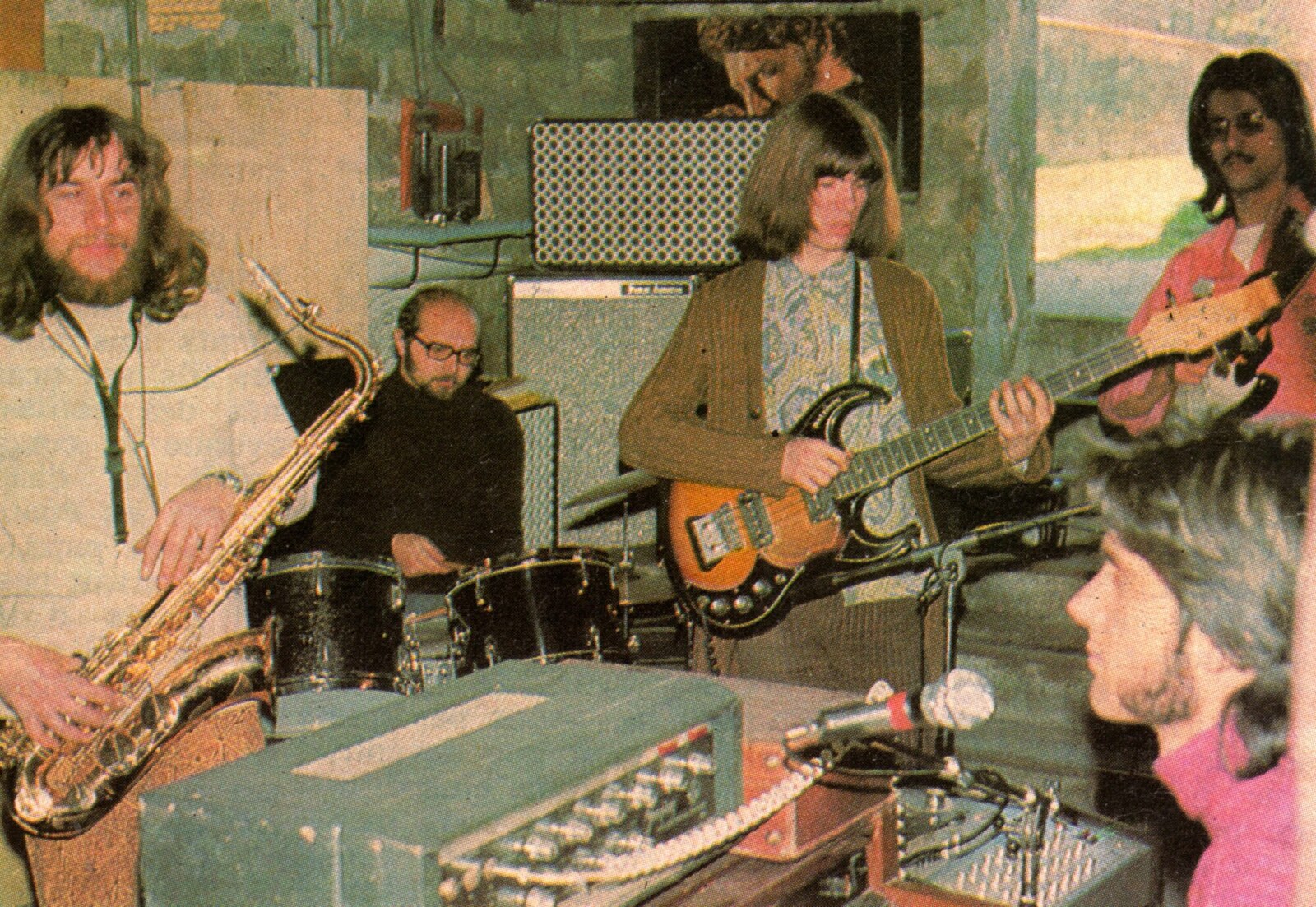
What sort of venues did Moving Gelatine Plates play early on? Where were they located?
It was the only concert before the “big stage” of the Festival du Bourget.
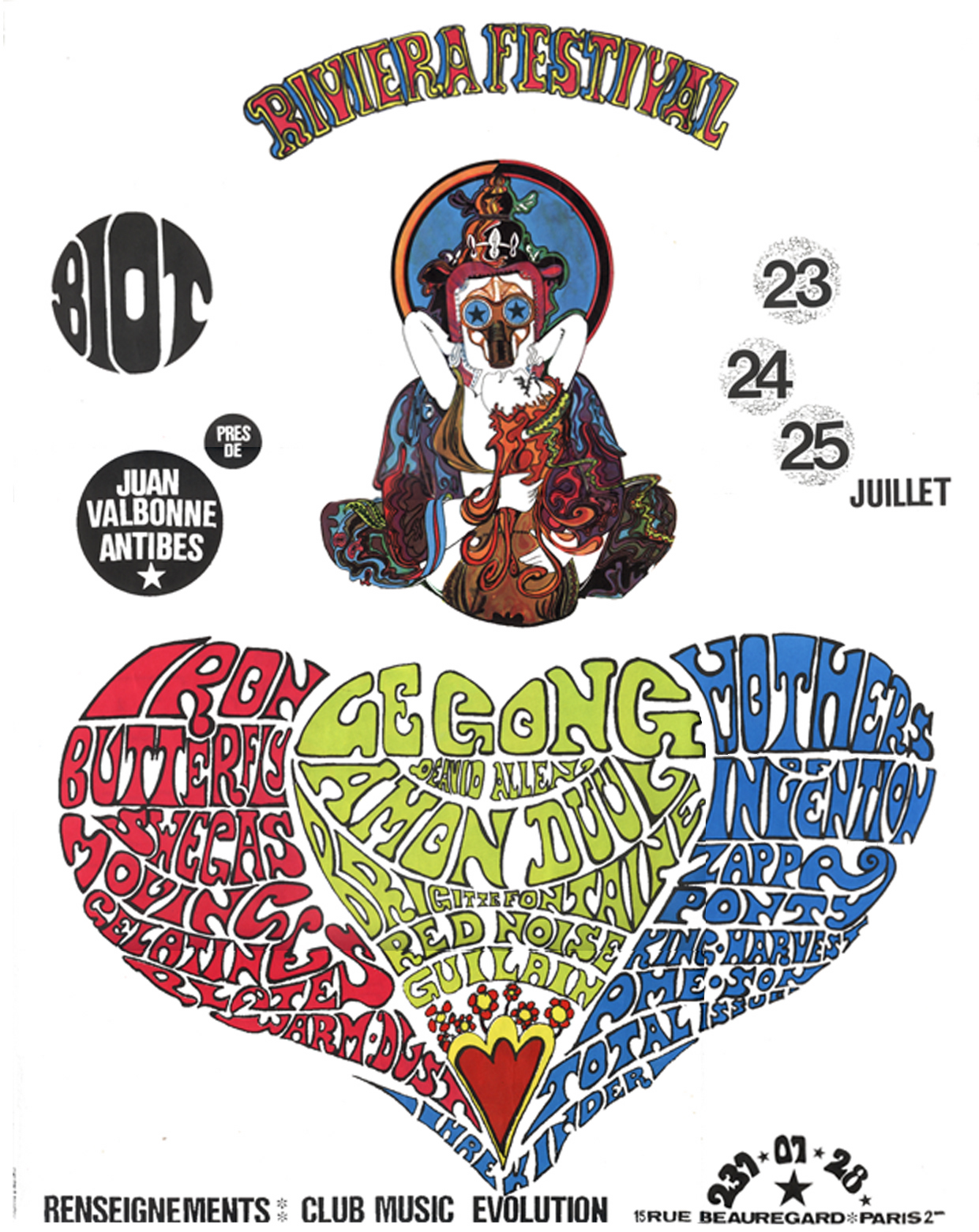
Wanting to see Pink Floyd and having no money, we decided to go see the organizer of the festival, in order to play in exchange for a pass. The same day, we registered for the Golf Drouot springboard for April 3, 1970.
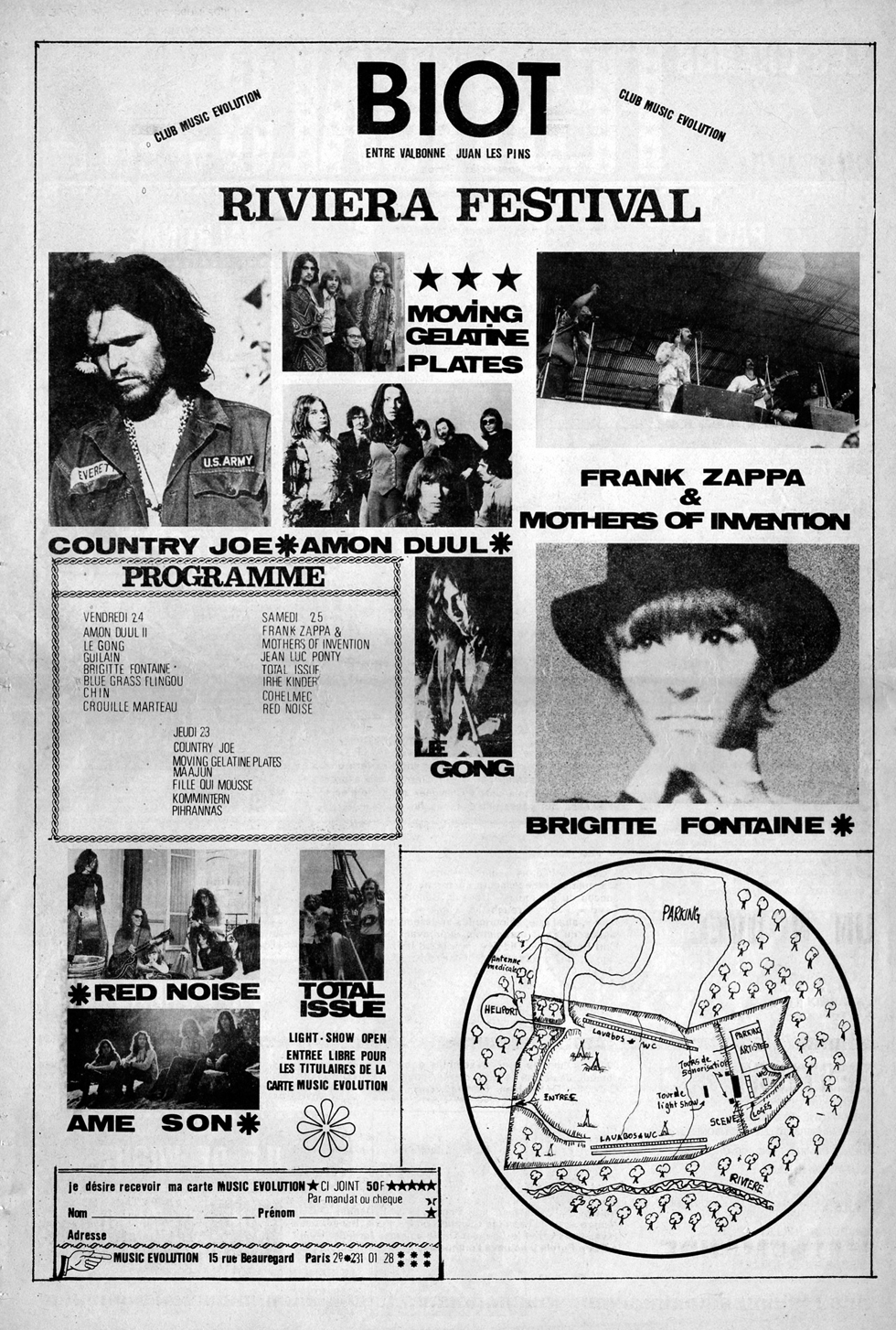
How did you decide to use the name “Moving Gelatine Plates”?
We decided to find a new name when we started to play our own compositions. Michel found the name “Moving Gelatine Plates” in a book by Steinbeck during an English class in high school (“Travels with Charley: In Search of America”). This term referred to “traveling photographic plates”. Not necessarily memorable because complicated, the name was nevertheless unanimous, by its “underground” side.
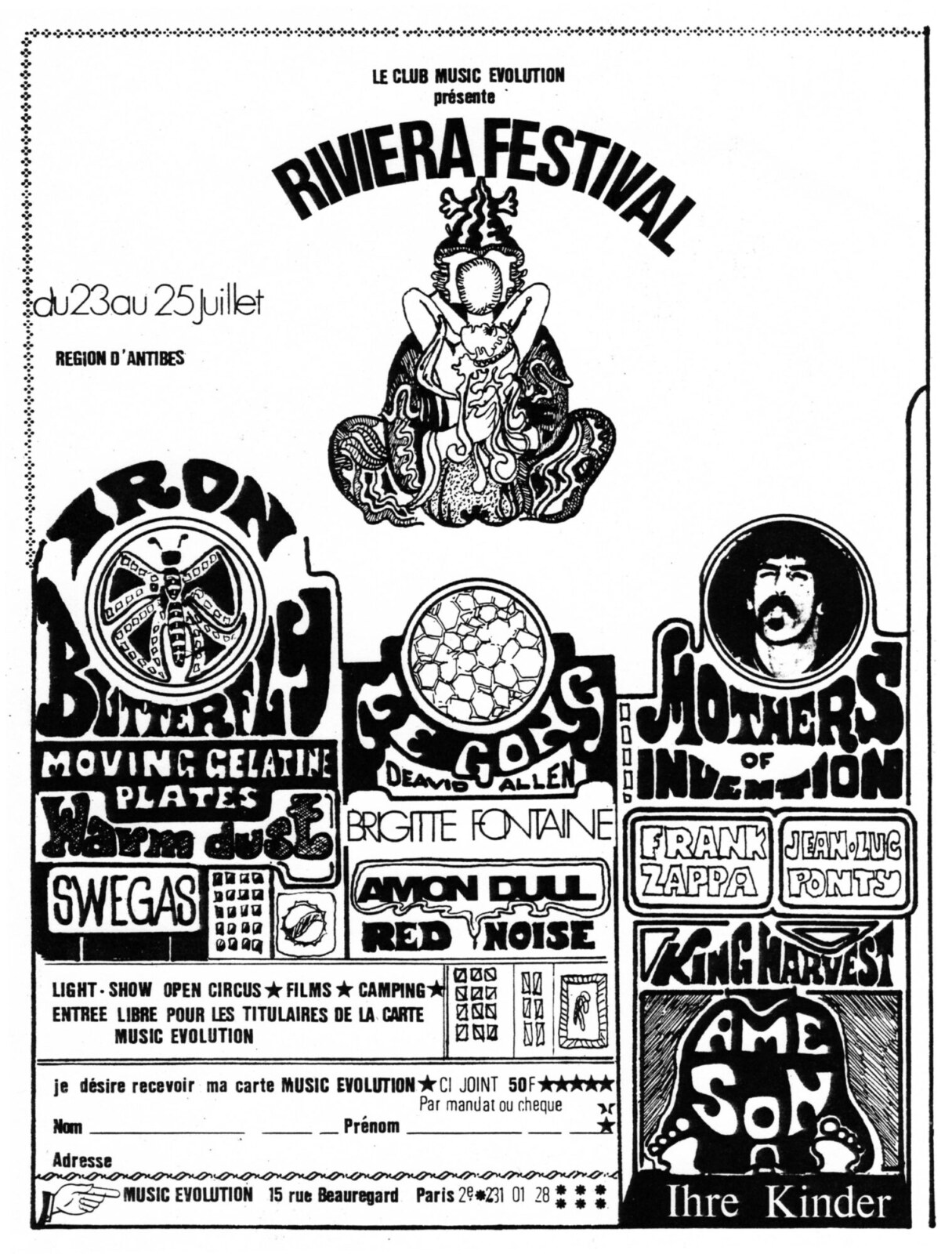
“We say that their music is original, it is only a compromise of Soft Machine, Pink Floyd and Frank Zappa”
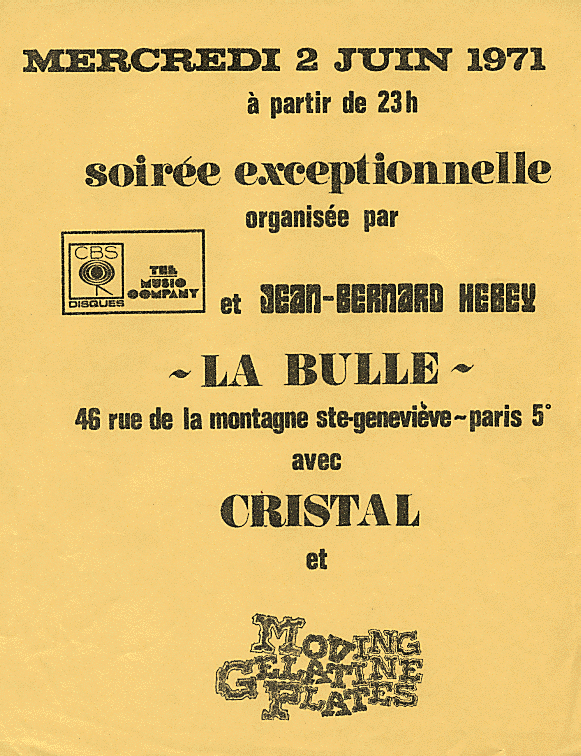
What influenced the band’s sound?
We listened to all kinds of music: classical, contemporary, jazz, variety… Each of us had preferences, of course, but the mixture of our respective influences came naturally. One was more attached to the melody, the other to the rhythm, one to the harmonies, the other to the sound.
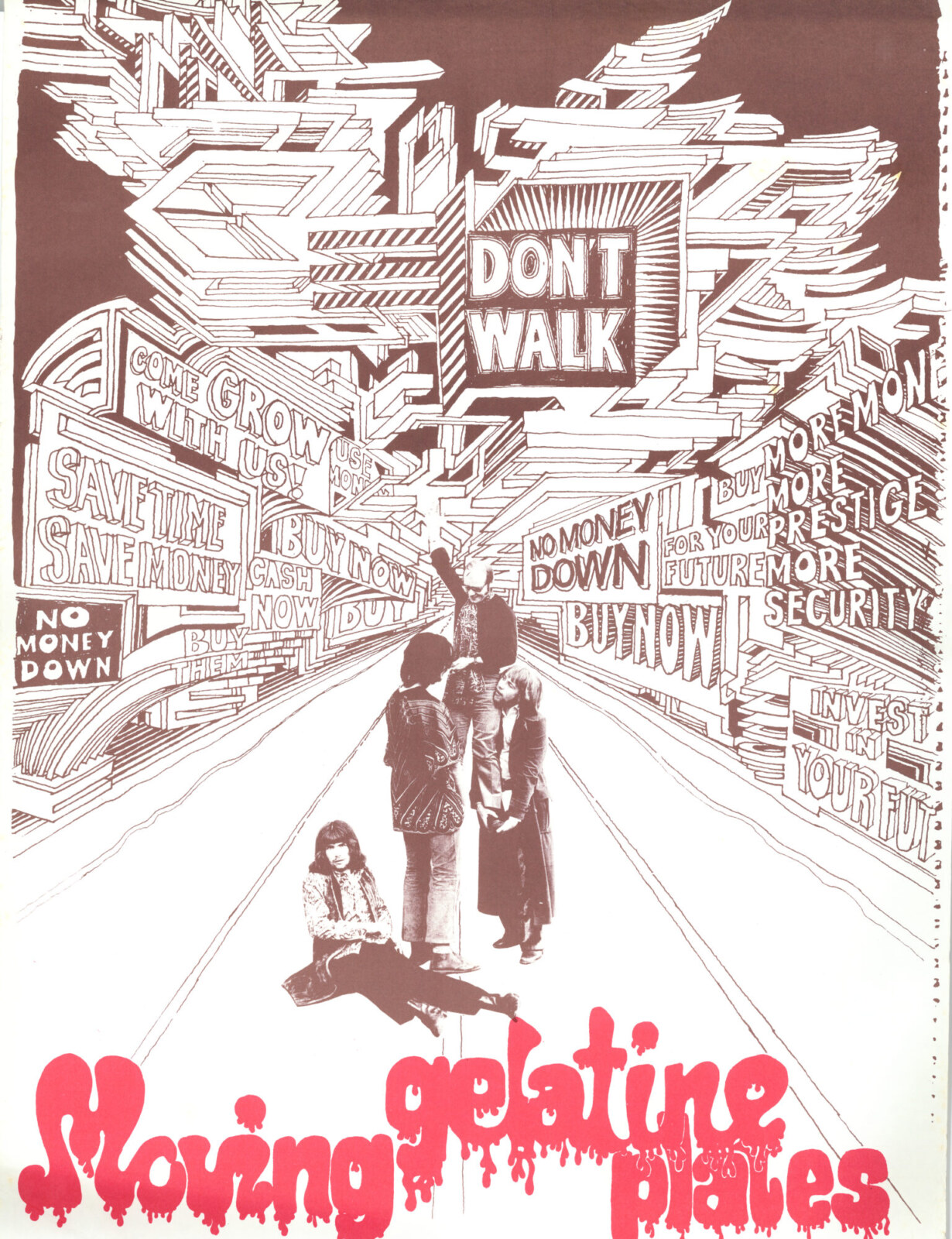
I remember an article by Paul Alessandrini in Rock & Folk magazine. He said when talking about MGP: “We say that their music is original, it is only a compromise of Soft Machine, Pink Floyd and Frank Zappa”. We took this as a compliment!
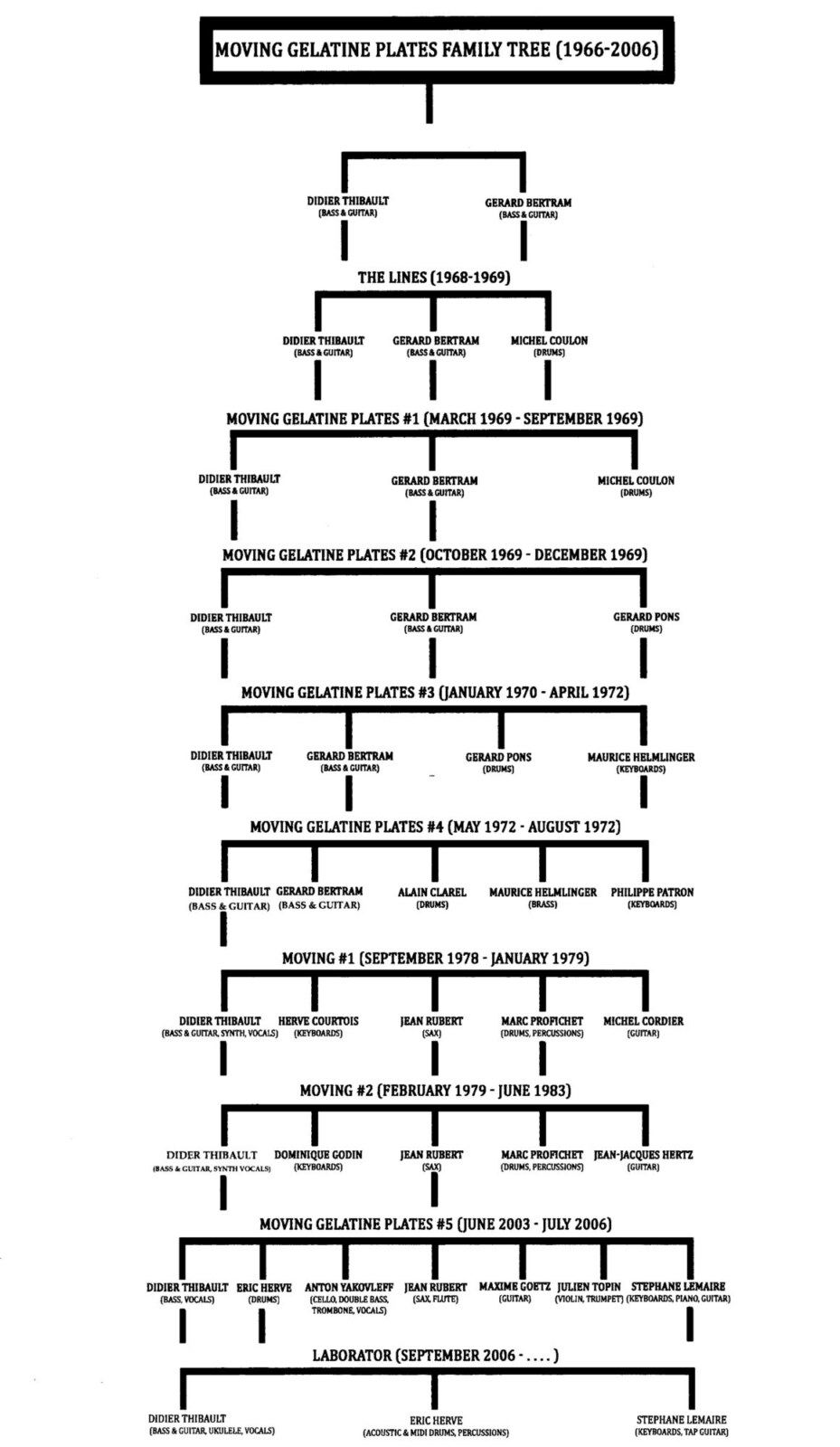
Did the size of audiences increase following the release of your debut?
So we played at the Bourget Festival. First on a small side stage, Friday March 27, 1970. But the audience (around 400 people), very enthusiastic, petitioned for the next day to be played on the big stage. It was accepted and we played just before the Pretty Things. It was a triumph in front of 5000 spectators and the consecration. We even opened the television news. In the process, we won the springboard of Golf Drouot.
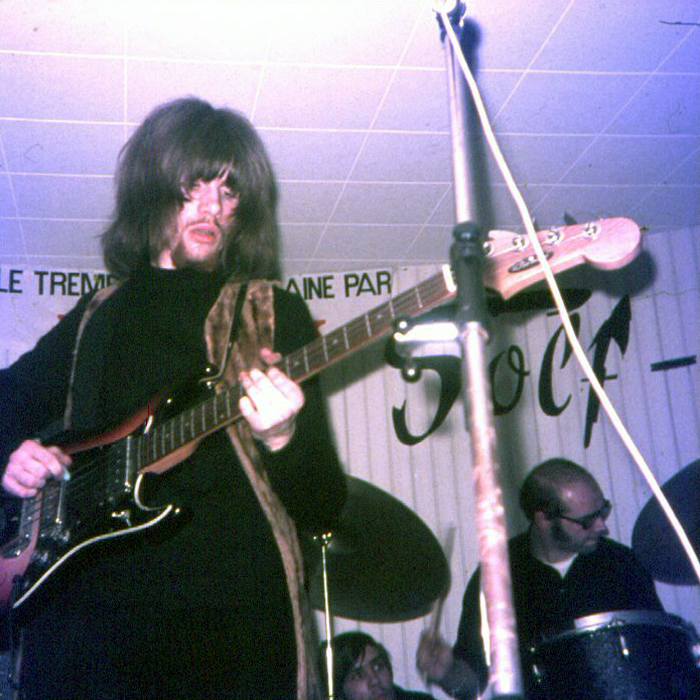
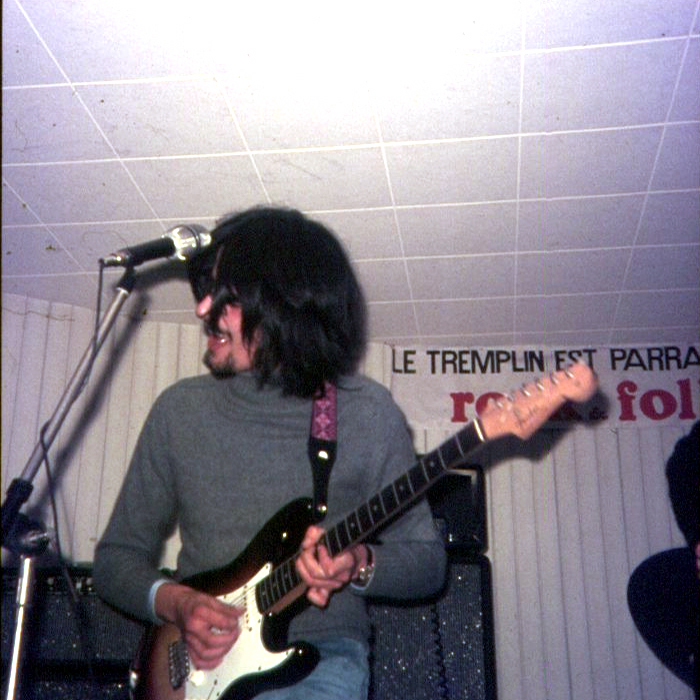
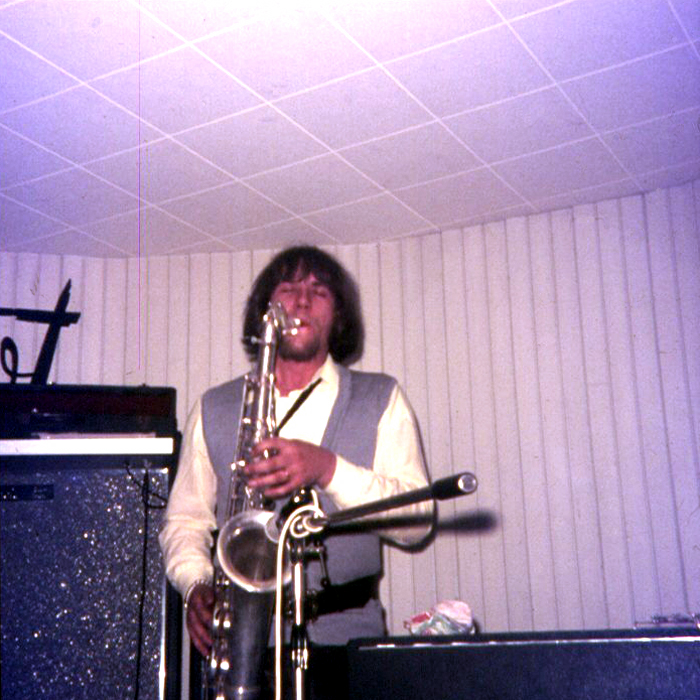
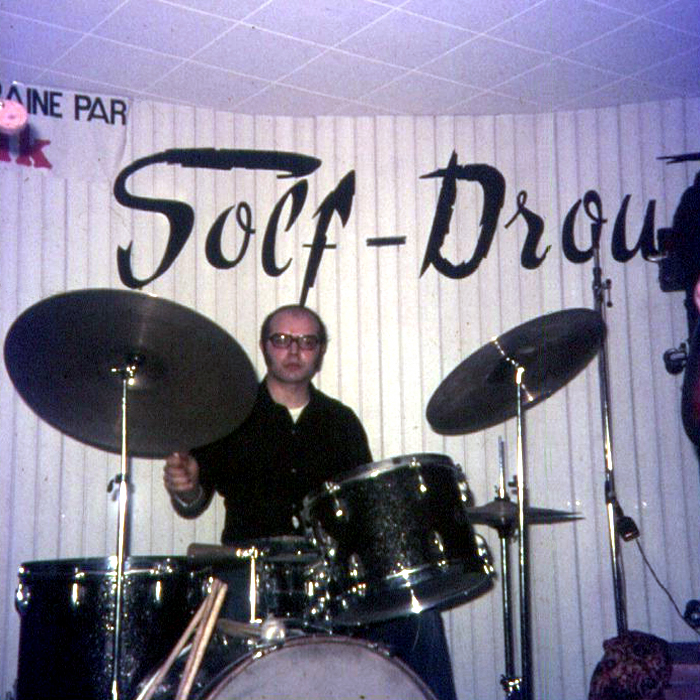
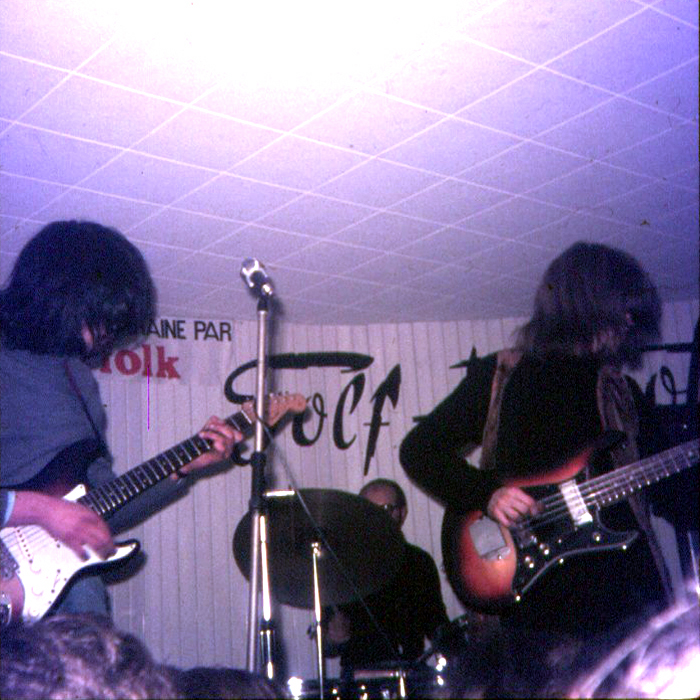
With the many articles published in specialized journals (Rock & Folk, Best, Extra, Pop Music…) our audience has grown on its own.
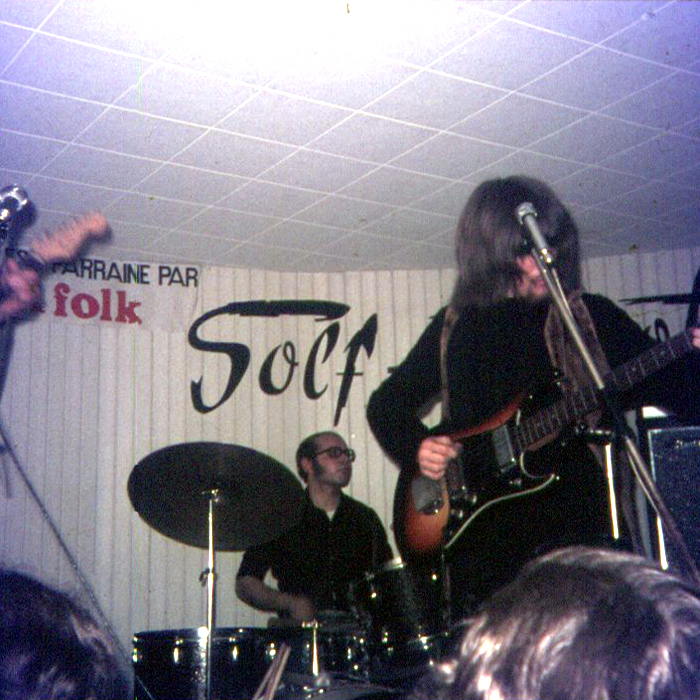
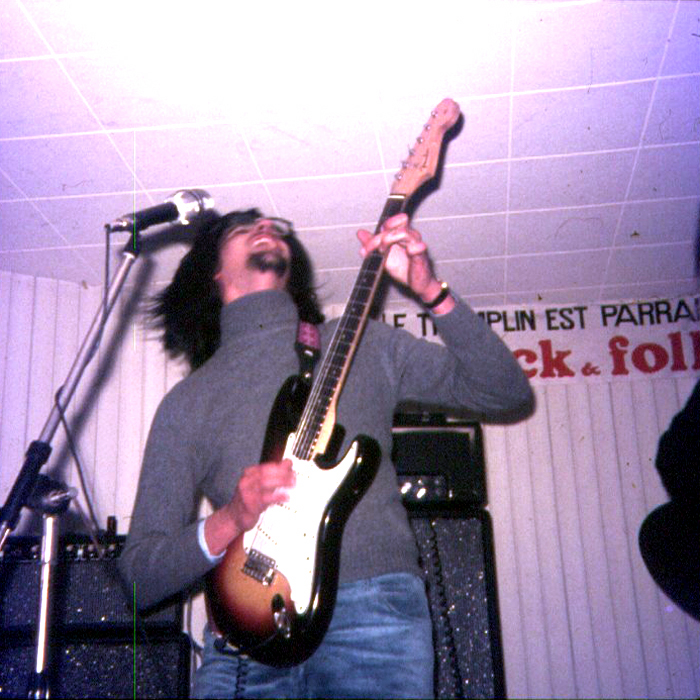
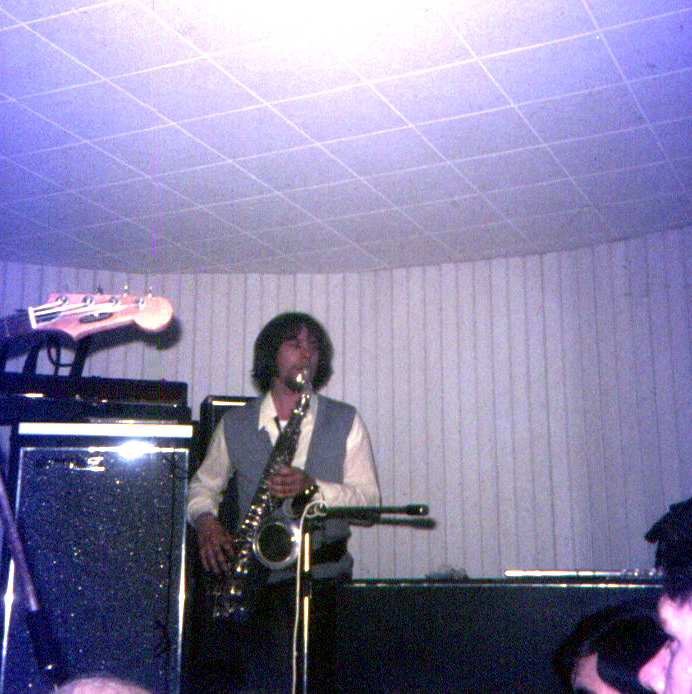
Then it was the Biot Festival (23, 24 & 25 July 1970), with Frank Zappa, and concerts with other greats of that time (1st part by Jean-Luc Ponty, East Of Eden at the Olympia, concerts with Magma, Gong, Triangle, Total Issue, Brigitte Fontaine).
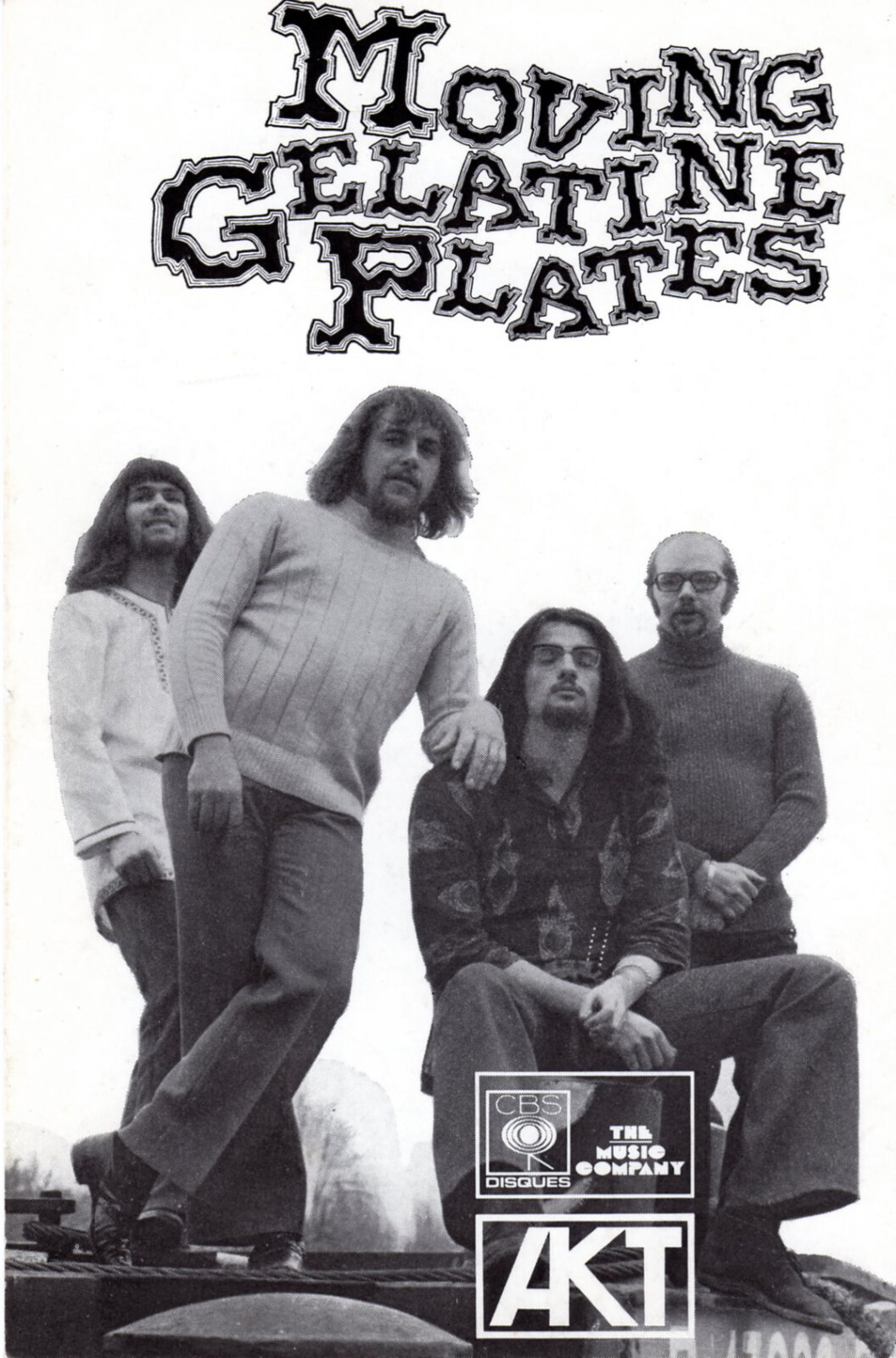
Claude Rousseau made us record a 4-track disc at the Saravah studio (where Brigitte Fontaine, Areski & Higelin worked), at the dead end of Pigalle. He pressed the disc in a single copy (so-called “flexible” disc). He lent it to a friend, Gilles Yéprémian (newspaper “LeParapluie”), who himself played it to Patrice Blanc-Francard who played it the same day at José Artur’s Pop Club.
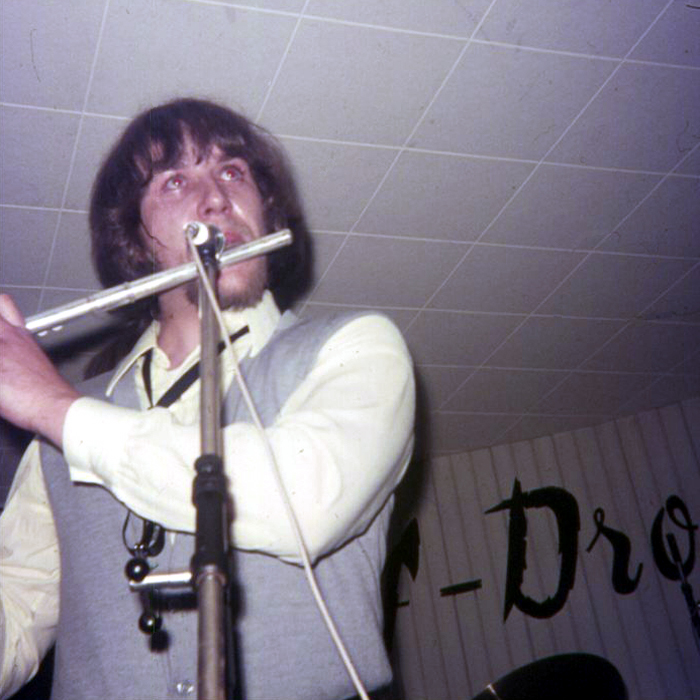
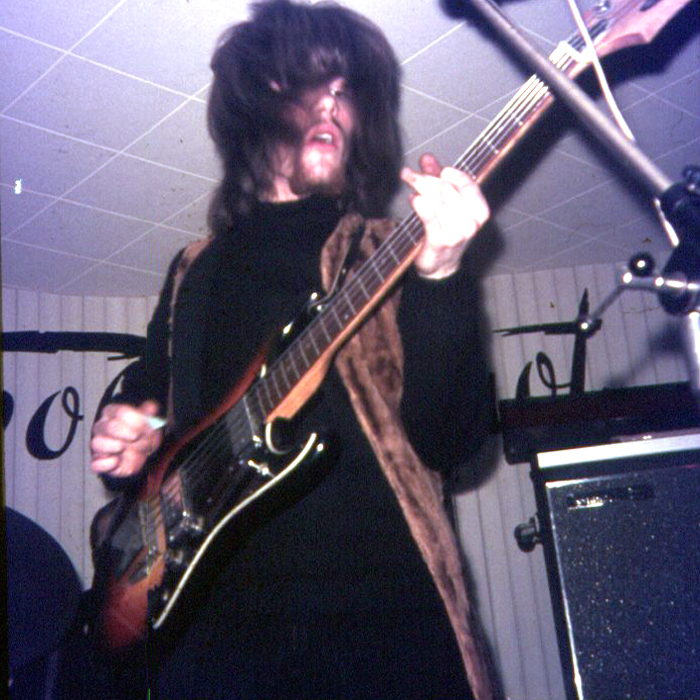
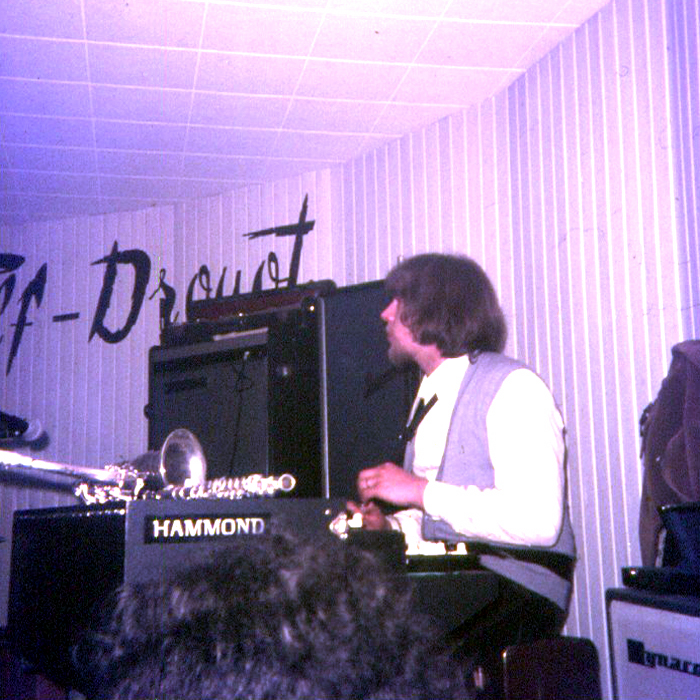
Faithful listener of the Pop Club, I was very surprised to hear it on the radio! I picked up the phone immediately because I had no idea at all, and an appointment was made for MGP to play live the following week for… 40 minutes! We played it again for 20 minutes, then a third 10 minutes…
“Our philosophy was to refuse the “Majors” and to preserve our “underground” side.”
How did you get signed to CBS Records?
My father had a long relationship with the Odeon record company, which became CBS. The director, Jacques Souplet, asked him on numerous occasions to have them signed with him. But Claude Rousseau, the organizer of the Festival du Bourget, had revealed to us and we owed him the priority of a contract for concerts and records. Our philosophy was to refuse the “Majors” and to preserve our “underground” side. We therefore signed with him on June 9, 1970.
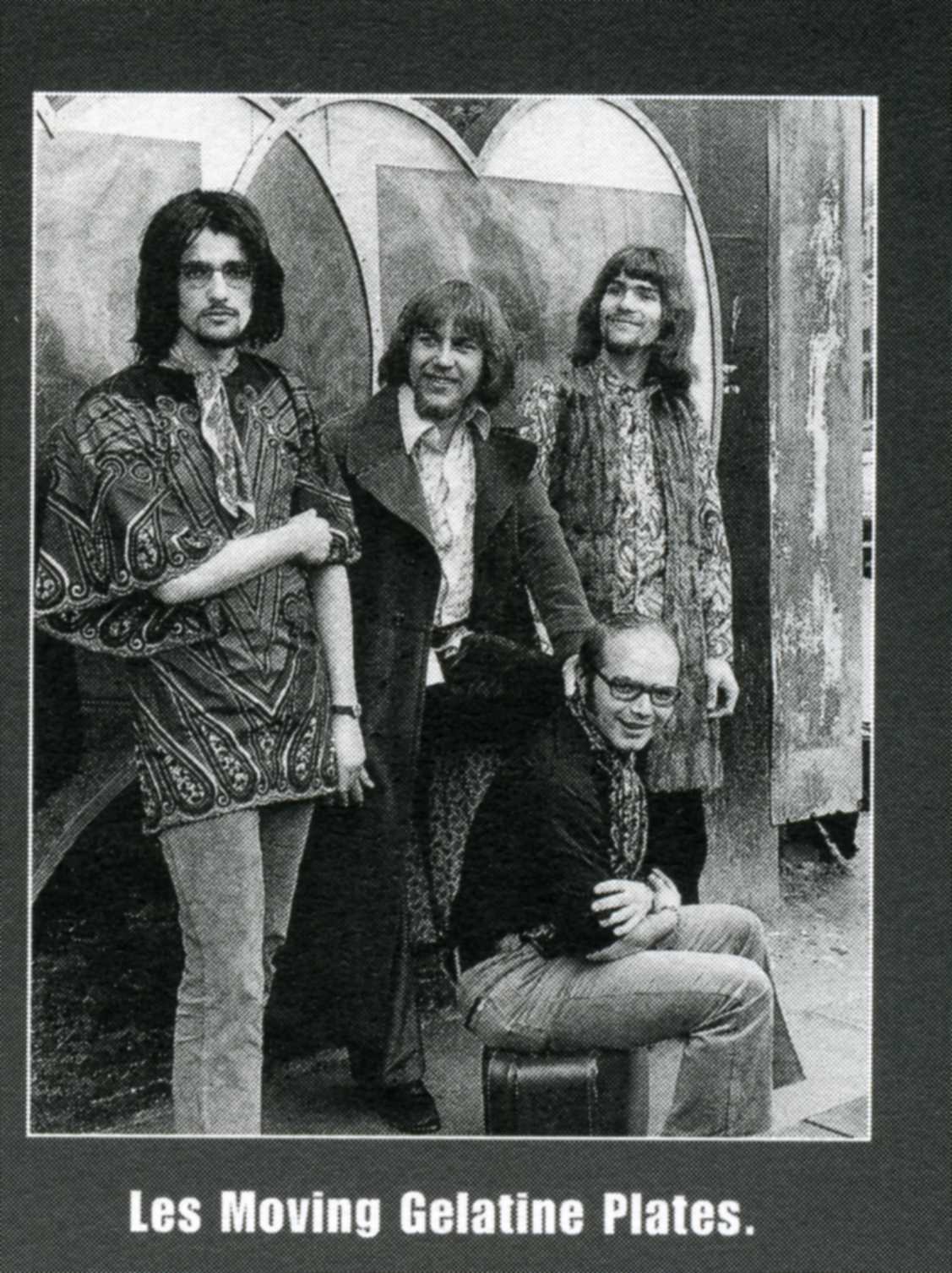
But Claude Rousseau had big financial problems, and in exchange for a tour where he could not pay us, he canceled our contract on January 18, 1971, which also freed us for the record.
During a concert at the Fac d’Assas in the first part of Brigitte Fontaine, we met Claude Delcloo, himself jazz drummer of The Full Moon Ensemble, who had set up the AKT label within CBS. He quickly convinced us to sign with him on February 4, 1971, citing the fact that he had complete freedom in his artistic choices.
What’s the story behind your debut album? Where did you record it? What kind of equipment did you use and who was the producer?
The recording took place during a week in March 1971 (16-tracks recording), at the Davout studio, which has now disappeared. The band having run the pieces well on stage, things went easily. The sound has remained very faithful, it is true that at the time we did not abuse “noise gates”, filters and equalizers which have a clear tendency to sanitize the sound of current music … The sound recording was almost “live”.
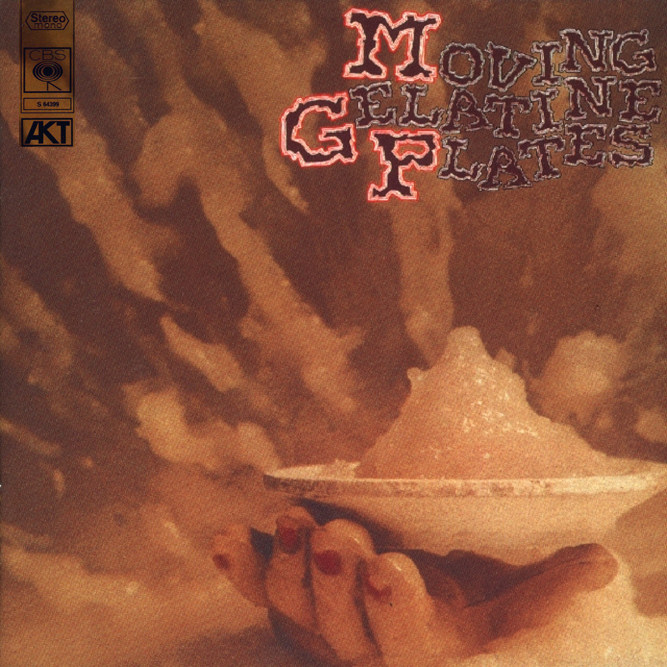
The improvised passages not being counted in bars, the choruses were recorded most of the time with the rhythm. It was practically only the vocals that were re-recorded. The result lived up to expectations. Raw and direct sound, close to what MGP had on stage, and faithful in design. Claude Delcloo left all freedom, nevertheless distilling precious advice, the experience of the group in the studio being almost nil. With hindsight, only the drums appear a little strong in the mix, but this may be explained by the fact that Claude Delcloo was a drummer…
Please share your recollections of the sessions.
MGP has fond memories of the sound engineer, François Dentan. Charles Trenet only wanted to work with him when he went at the Olympia! So rather used to working in tradition, he was enthusiastic about innovating, finding new things. Very surprised for example to record for the first time in his life a bass with distortion, he was happy to tamper with the sound of drums in the solo of ‘Last Song’. It may seem easy today with any “flanger”, but he had to run around to find a sound generator, which Claude Delcloo “had to hold firmly in order not to lose the” phasing point”.
The titles chosen were almost all those performed in concerts, such as at Le Bourget. Except ‘Like a Flower’, which was one of the very first songs composed, but which will not be recorded until 2006!
“Genius lies in madness.”
How about ‘The World of Genius Hans’? What’s the story behind it?
For the second album, ‘The World of Genius Hans’, the composition work was much more “refined”. The songs were much more constructed and designed to be recorded. Some benefit from the contribution of outside musicians: bassoon, vibraphone, trombone, choirs. They were, however, played in concerts, with perhaps freer improvisations, and therefore longer.

It was recorded at the Studio des Dames (also disappeared today), from December 7 to 15, 1971, with Roland Guillotel as sound engineer, who subsequently set up the famous “Guillaume Tell” studio in Suresnes. More precise, it nevertheless appears very sophisticated, less spontaneous, to the detriment perhaps of a certain impact. It is the apotheosis of the “Moving System”, around 450 themes, more and more structured.
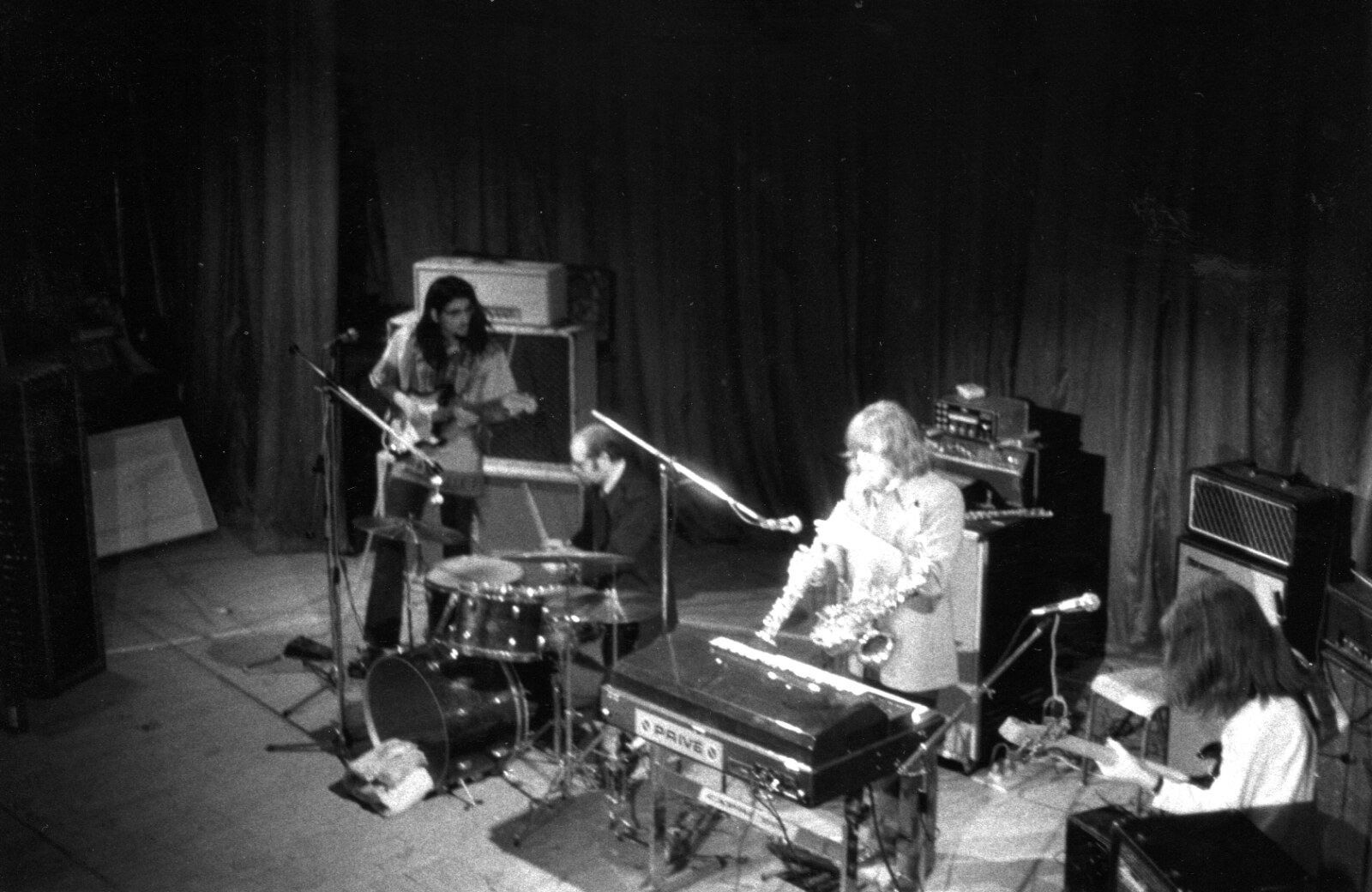
The title and the cover are based on the idea that genius lies in madness. The words still don’t deliver very important messages, like in the first album. Rather, the voice is seen as an instrument.
Would you share your insight on the albums’ tracks?
Some titles were written collectively. The first title, for example “The World of Genius Hans” is an elaborate construction with themes that each has brought, then a common work to make the connections. Other titles were written in a more personal way, like ‘Funny Doll’ (Gérard Bertram), or ‘Cauchemar’ (Didier Thibault). The experience and the complicity of the 4 members of MGP helped to build certain “patterns” which made the originality of the compositions, and everyone found themselves there.
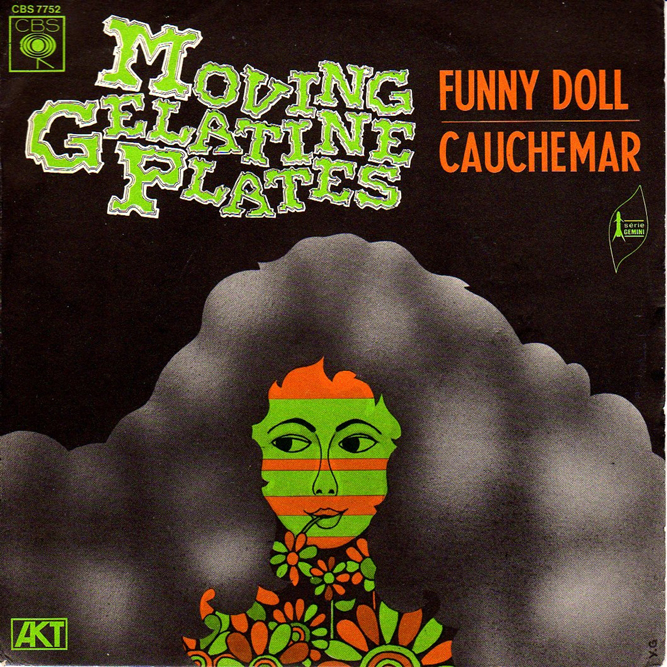
“Calf’s head smoking a cigarillo”
What can you tell me about the cover artwork for both albums?
The first album has no title of its own. The idea of the cover was therefore a “literal” translation of “Moving Gelatine Plates”, namely “plates of gelatin that move “.
For the second album, the idea of madness inspired producer Claude Delcloo, and we were immediately convinced by the photo of the calf’s head smoking a cigarillo. This pouch is one of the most original pouches of the time …
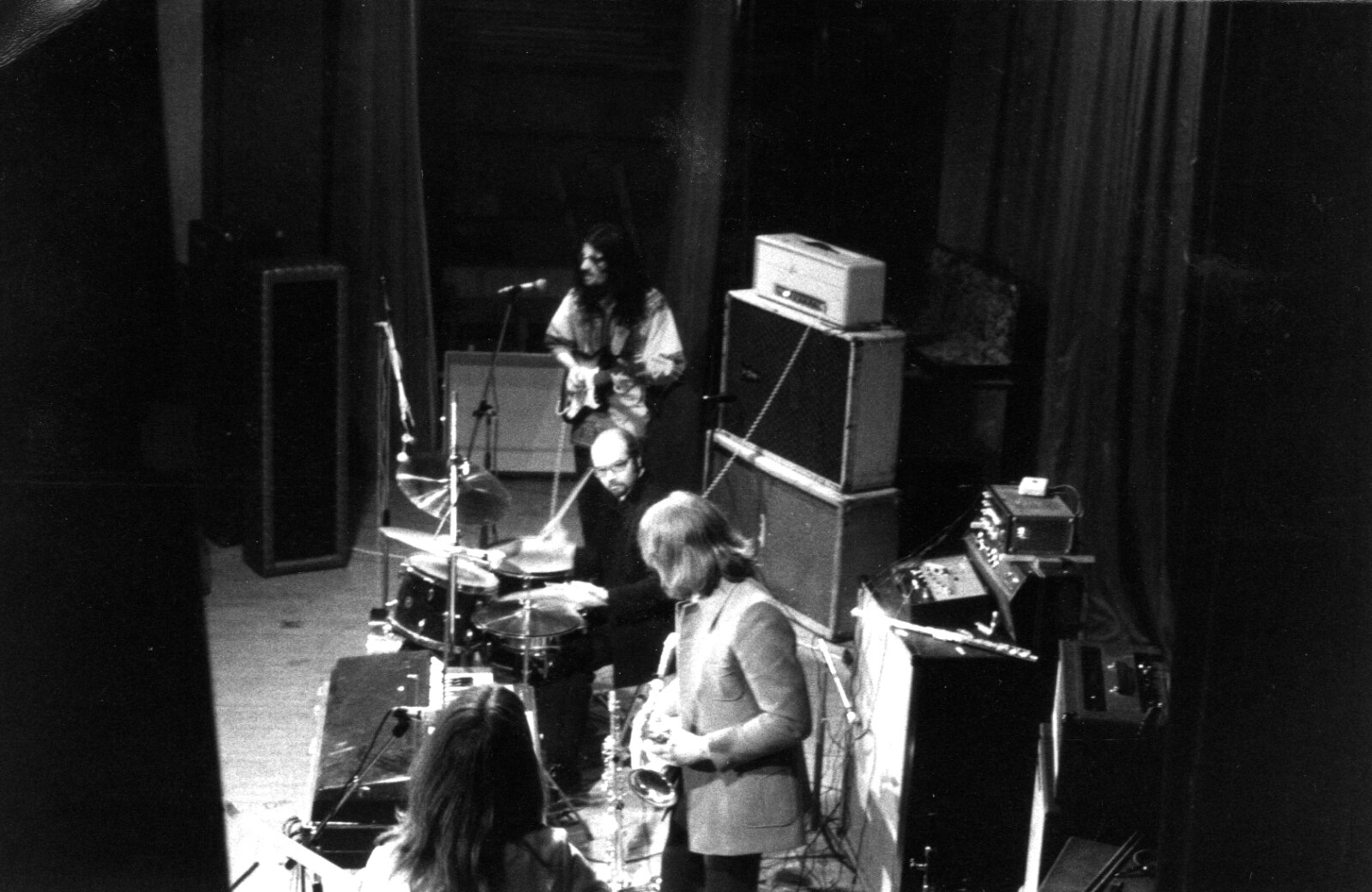
Was there a certain concept behind the albums?
The idea behind the first album was to “make concrete” and “fix” the music we played on stage.
The second was seen more as a construction, and the culmination of some research work.
Is there any unreleased material by Moving Gelatine Plates?
No. In 1980, we made an album again under the name “Moving”. The titles can be found on the CD reissues of the first 2 albums, at Muséa.
In 2006, I reformed the group once again, composed of 7 musicians (guitar, bass, drum, keyboards, sax-flute, violin, cello). We released the album ‘Removing’ on which appears the title ‘Like a Flower’, already played at the Festival du Bourget.
All unreleased tracks, mockups, and radio show clips are featured on an album called ‘Don’t Walk’, released by Monster Melodies on November 15, 2015.

In 2006 you released ‘Removing’.
The idea of re-forming the group had been in my head for a long time. I knew interested musicians, but no keyboard. A friend, Nicolas Maldague (author of the cover for the album ‘Removing’) knew a very motivated, Stéphane Lemaire. Thus was born the project to remake a record, with new songs in the same spirit. Unfortunately too few concerts to follow up …
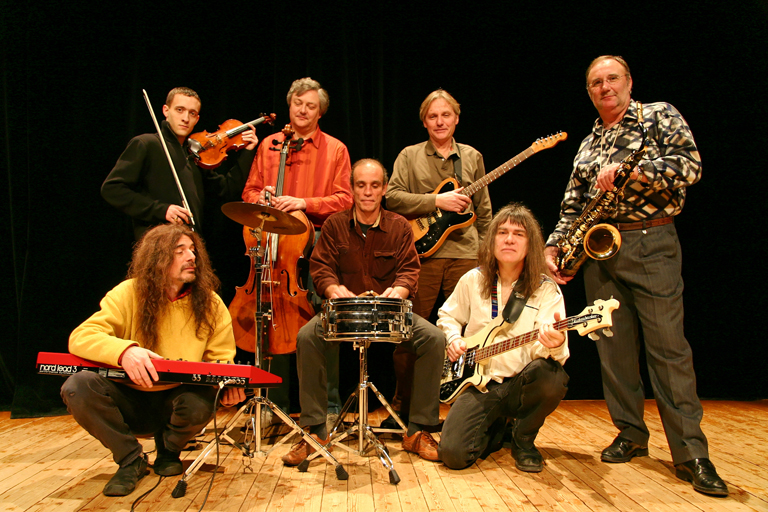
The contribution of “strings” enriched the group, and the title ‘Like a Flower’, composed in 1969, is an example.

“We do not systematically use our instruments in their basic “function”.”
Would you like to comment on your playing technique? Give us some insights on developing your technique.
Gérad Bertram and I started playing at the age of 14, picking up songs from the biggest groups of the 70s. We reproduced them without knowing too much music theory. But when we started to write, we took lessons, music theory and harmony. Gérard Pons and Maurice Helmlinger had studied at the conservatory. Each of us had different backgrounds and tastes. But the magic happened, the preferences of each did not contradict, but complemented each other. At the beginning, we didn’t have too many questions about the methods and the technique. Moreover, recklessness was in the spirit of this time (the 70s). I don’t remember having “done scales” …
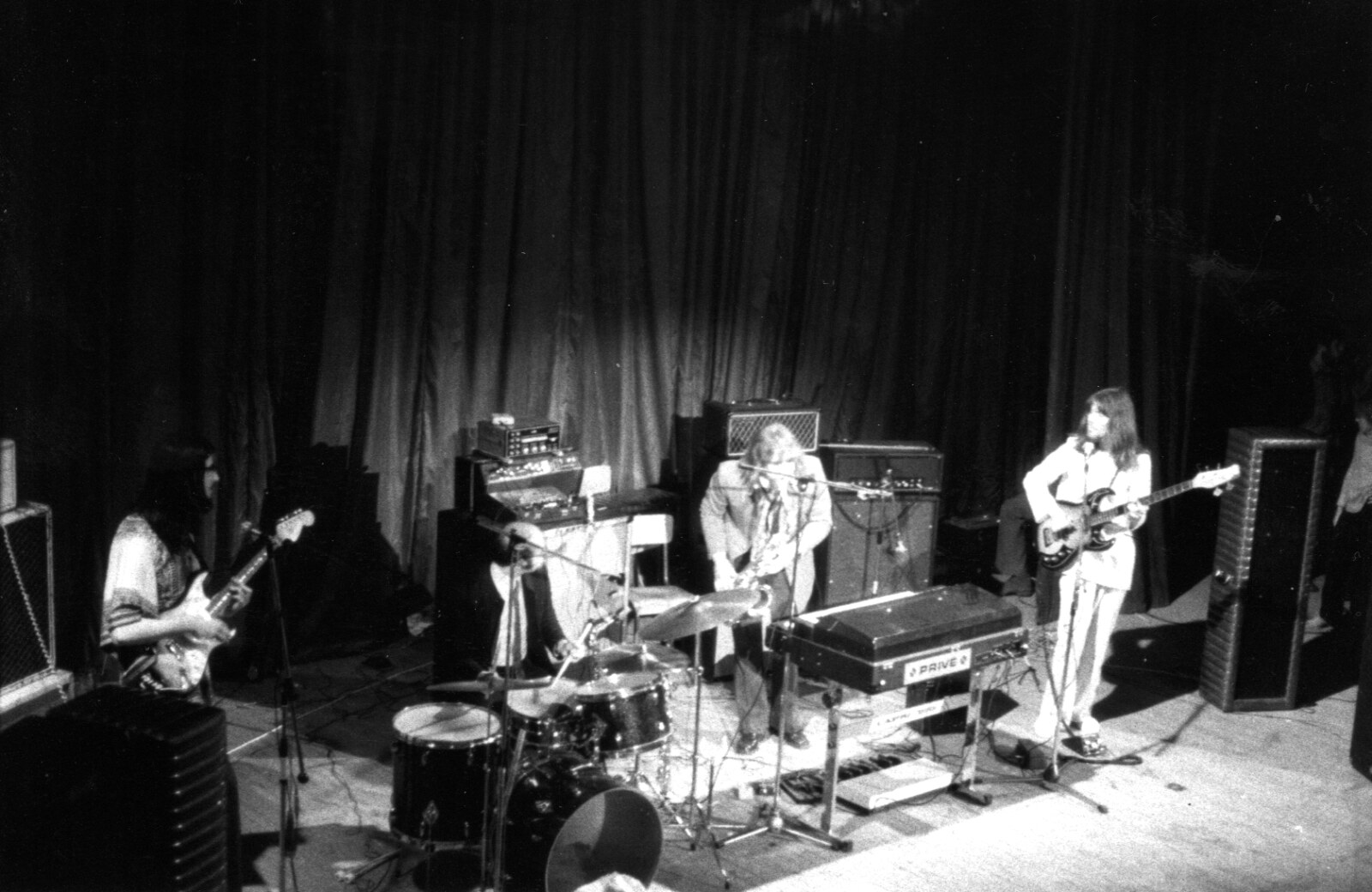
One of the specificities of the “Moving Sound” is that we do not systematically use our instruments in their basic “function”. We did not necessarily respect the “rhythmic” or “melodic” role. Bass and drums were not limited to a “supporting” role, but could play entire melodic lines.
We played spontaneously, always with a concern for research and innovation. Creativity was, in my opinion at least, much richer than in present-day music, while the instruments, the technical tools for working were much less advanced … For example, you had to turn over the magnetic tape to reverse a sound, whereas ‘today it is enough to press a button on the computer keyboard to “reverse”!
Regarding the technique itself, we acquired it without realizing it too much, quite naturally by first reproducing what we liked. Personally, concerning the bass, I played it more like guitar, adding the same effects (wah wah, distortion…). This is because Gérard Bertram and I were both guitarists at the start. When we added a drummer, either of us took the bass. Then the rapid start of MGP made me devote myself entirely to it. However, I always continued to play the guitar, at least to compose, then also became interested in keyboards, mainly with the arrival of synths.
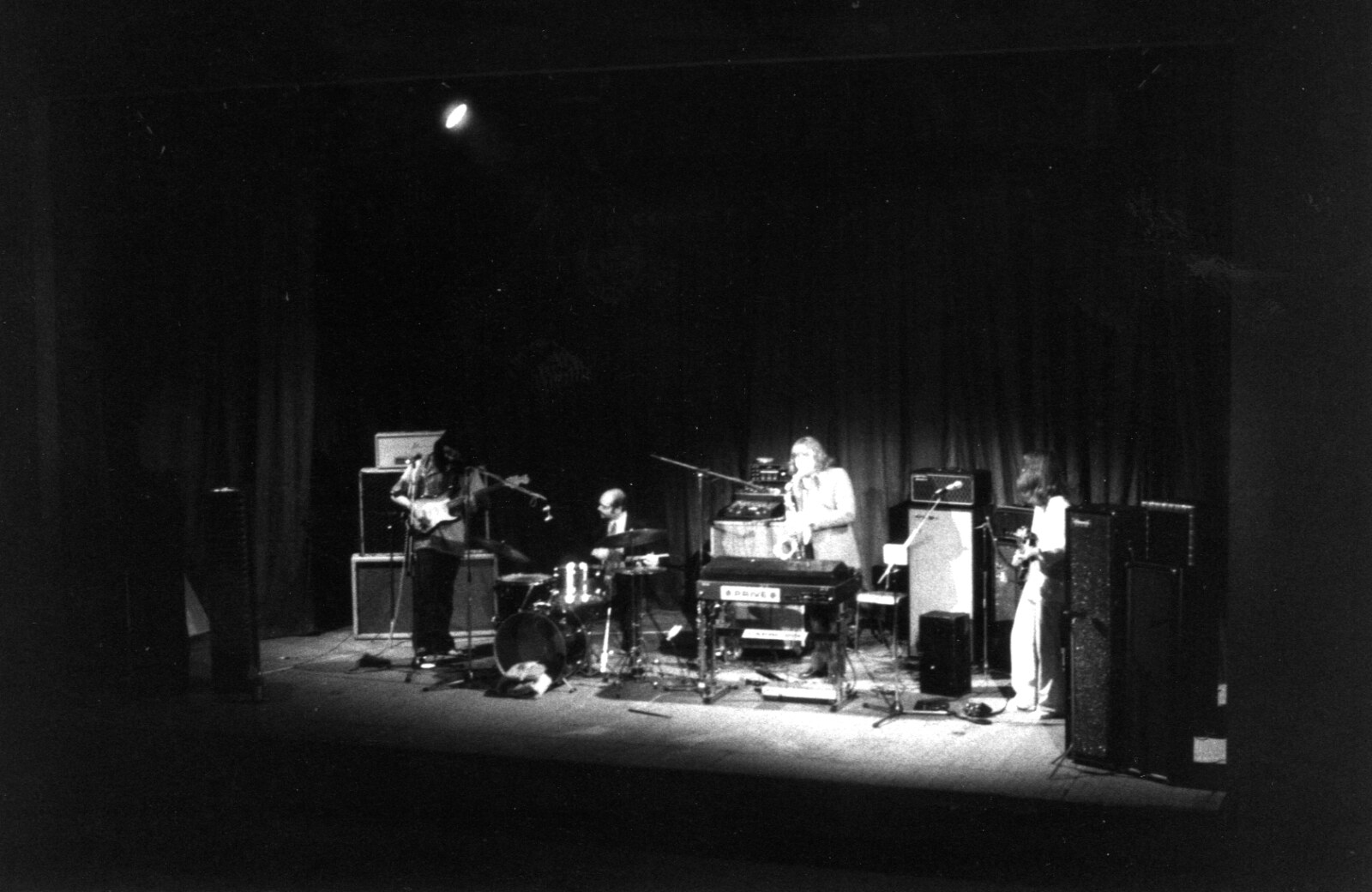
What can you say about the formation of Moving, which released one LP in 1980?
This first reformation was not easy to achieve. After trying five different drummers, I had the chance to meet Marc Profichet, from the Oedipe group. Very inventive and brilliant musician, he also played the xylophone, vibraphone and glockenspiel …
Then the second challenge was to find a saxophonist. After three attempts with musicians who were a little too “jazz” or simply not very sympathetic, I put advertisements in a store in Pigalle. A very nice trumpeter, Jean Carabalona, answered me by telling me that he played with a saxophonist, Jean Rubert, but that I had to take them both! This was done, but shortly afterwards the trumpeter had a job at the Ministry of Music of Jack Lang, newly created by François Mitterrand.

But it is with immense pleasure that I have always played, for 40 years, with Jean Rubert, with whom I also share other affinities which strengthen our friendship.
On guitar, Michel Cordier, who was previously part of a group that played MGP songs, and who had bought the same equipment! But he left the group for family reasons just before the recording, and we welcomed Jean-Jacques Hertz, excellent guitarist.
On the keyboards, Dominique Goding, who came from the Ligeia group, and who later was part of the excellent Indigo vocal ensemble.
The instrumental spirit of MGP is quite faithful on this album. The problem lies in the “sung” parts. Already because your lyrics were in French, then because the producer, Jacky Giordano, wanted more vocals. My sung parts, quite “high perched”, were rather inspired by Robert Wyatt. But in French, I was assimilated to the French variety, and to Patrick Juvet in particular, which is far from representing my ideal reference …
All the titles of this album can be found on the CD reissues of the first 2 vinyl albums.
You were very active with Le Procédé Guimard-Delaunay. Would you mind to recall some of the time within the band and its material?
I joined this group at the end. I had previously had many experiences where music was mixed with theater, clowns and even acrobatic shows… I have always been passionate about adding visuals to music. The “Process” (PGD), was excellent in this mix of genres. Unfortunately, the leader, Philippe Delevingne, died early of a brain tumor while we were filming with the show “Soyons Spirituels”. But this short experience with PGD allowed me to meet and play with Éric Hervé, excellent drummer with whom I created the last MGP formation, for the album ‘Removing’. He is also on the album ‘Laborator’, in trio with Stéphane Lemaire and myself.
In 1989 you released your solo album ‘Interceptor City’.
Around 1985, I frequently recorded at the Imasonor studio, in the 17th arrondissement of Paris, with the excellent sound engineer Thierry Tizorin. Among others, he had worked for Ennio Morricone in Rome, and Romano Musumarra (official composer of Jeanne Mas), and who had participated in the design of the famous “Synthex” by Elka, a legendary analog synth from the 80s, which I still own …

I did a lot of publicity music, and also sessions for other artists. This is how I met Renaldo Cerri, producer of Manu Dibango and Jaïro among others. During a recording of an adaptation of a song by Madonna, he suggested that I make a CD of sound illustration music. Thus came out ‘Interceptor City’, recorded at home, on 8-tracks, hence the average quality. I also made him listen to songs that I had composed, so that he could eventually find performers to “place” them.

He called me back the next day to let me know I could record one myself. This is how a 45 rpm was released with the song ‘Touet Seule’, distributed by… CBS. But the song is not MGP, more in the style of ‘Hotel California’.
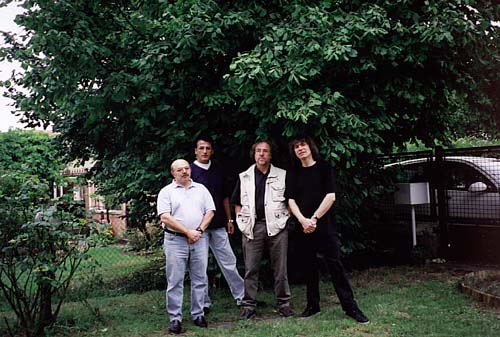
What was 2014 Monster Melodies Records about?
A friend, Hervé Queudot, who was a pianist in the Oedipe group with Marc Profichet and Claude Barthélémy, liked (I speak in the past tense because he is unfortunately deceased) to encourage meetings between people from all musical backgrounds. He introduced me to Serge Vincendet, who runs the Monster Melodies vinyl record store, at 9 Rue des Déchargeurs in Paris.
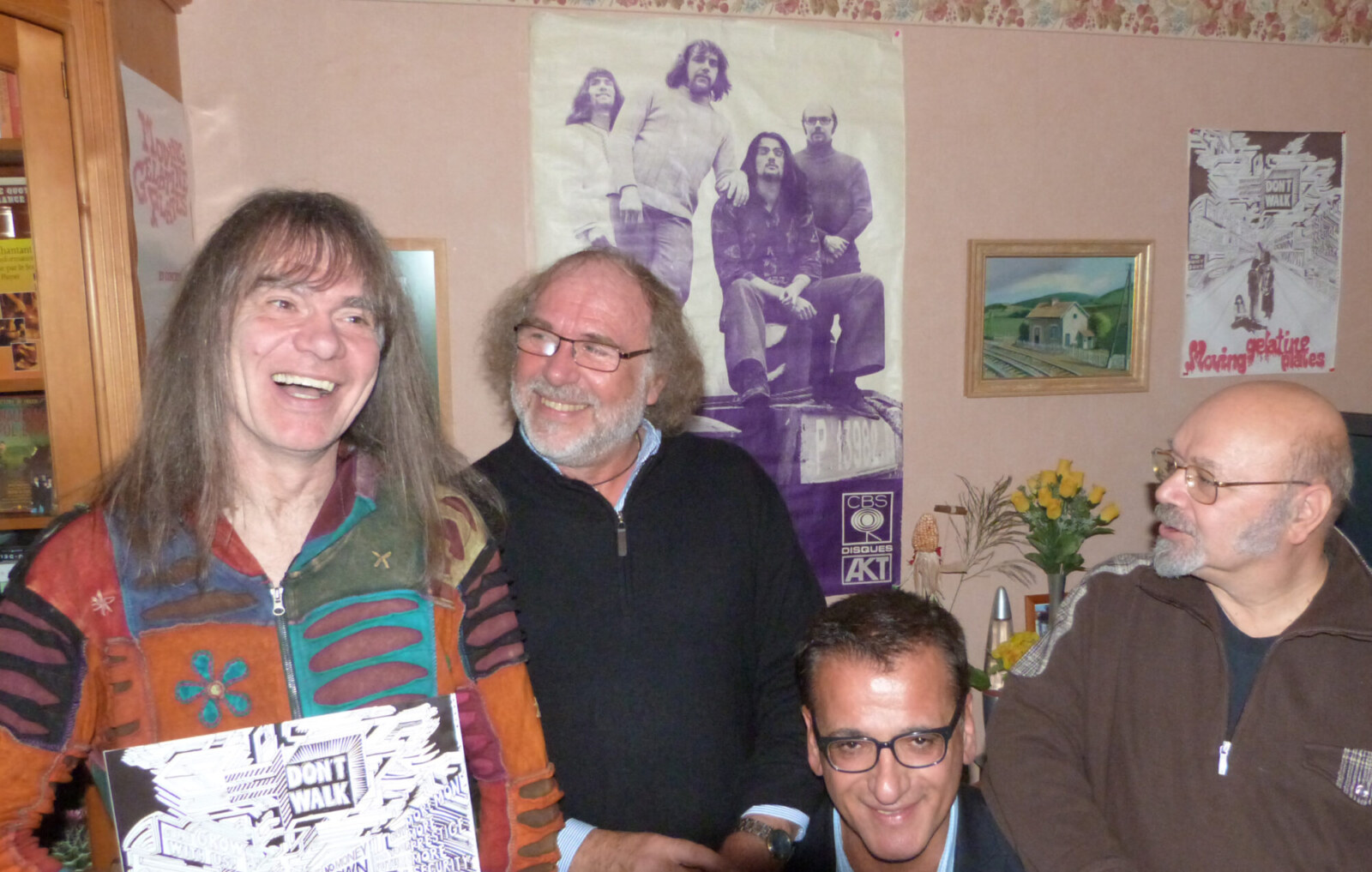
He was very interested in bringing out unreleased tracks from the 70s. He suggested that we collect what we could find. Serge is passionate. Talking and working with him is a pleasure. The disc also includes the exact replica (45rpm / 33rpm and original label) of the first disc (2 titles) that went to the Pop Club, as well as a full biography and family tree of MGP. In addition, its translucent pink color is well in the tone of gelatin …
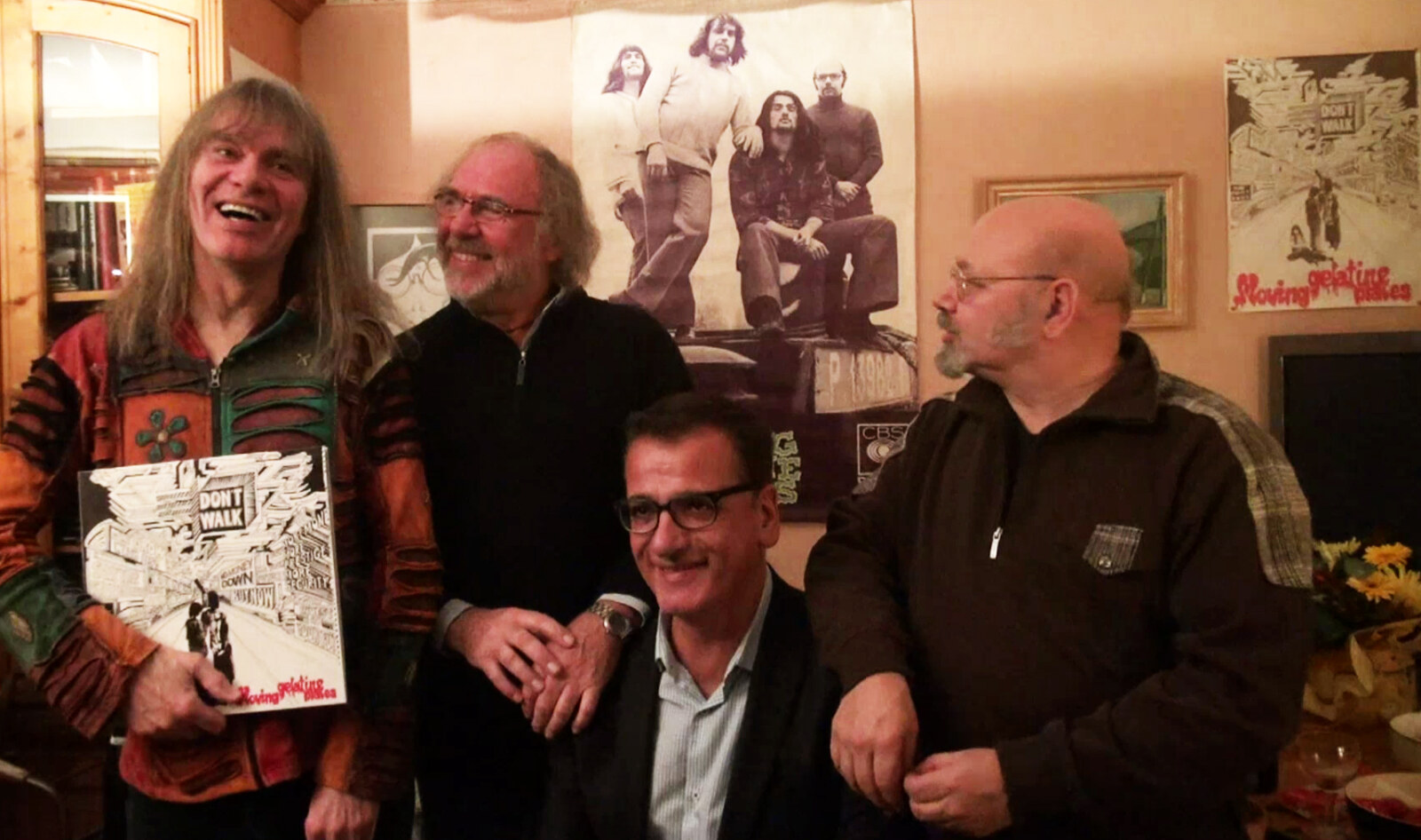
Laborator trio features members of Moving Gelatine Plates. You released an album in 2011. Are you planning to do more in the near future?
MGP, reformed in 2004, did not release the self-produced album until 2 years later.
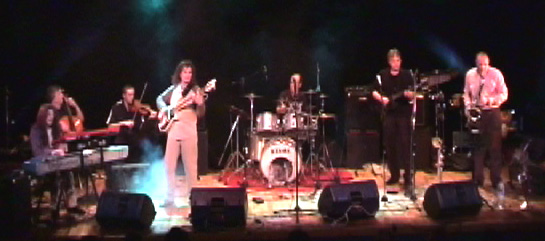
The search for concerts, even with the release of the new album, did not bring the results we hoped for. One of the difficulties lay in the fact that we were 7 musicians, with a lot of necessary equipment. Motivation quickly evaporated for some. That’s when we decided to play as a trio, hoping it would be easier, especially financially. But we still had 3 trucks of equipment: one for the sound system, one for our respective equipment, and one for the sets and the visual, among others with screens to project photos (see the cover). The music is very interesting, sounded like the record on stage, and was enriched with two mimes on stage. We would have liked to extend the experience, but unfortunately we did not have more concert proposals than for MGP, the budget being almost the same.
How are you coping with the current world situation?
The situation, for our profession, was already not really ideal, mainly for this kind of music.
Concerning the scene first of all. Medium-sized rooms are gradually disappearing. The MJC no longer program concerts, except those given by the students. There are still the “Zeniths” that we are far from being able to fill. Finally, there are no more turners.
Regarding the record, the promotion must be done by ourselves, the rare musical broadcasts have disappeared from radio and TV. People no longer buy records, download poor quality mp3, and often for free at the worst, to throw them away just as quickly …
Added to this the repeated confinements consecutive to the virus which ends all forms of cultivation and makes the situation of intermittents even more precarious … It is therefore more and more difficult not to feel a certain weariness and many worries, including on the future of the planet in general.
“The spirit of the 70s, with all that was spontaneous, is still alive”
Looking back, what was the highlight of your time in the band? Which songs are you most proud of? Where and when was your most memorable gig?
The best memories about MGP are without a doubt the festivals. Firstly because they were the opportunity to meet other musicians, including those we admired, and secondly because the audience was large, as well as the media coverage. The spirit of the 70s, with all that was spontaneous, is still alive, and many young people today regret not having known this era, and are listening to their parents’ records again! Everything seemed possible, and creativity was at its peak.
But I also have more fleeting memories. For example when we composed the title ‘X 25’. We were rehearsing at the MJC in Sartrouville, and a power failure forced us to work all evening in acoustics… It was the same for a concert at the Museum of Modern Art, where L’Open Light (with the screenings psychedelic visuals) had blew up. Gérard Pons did a drum solo that day for an hour!
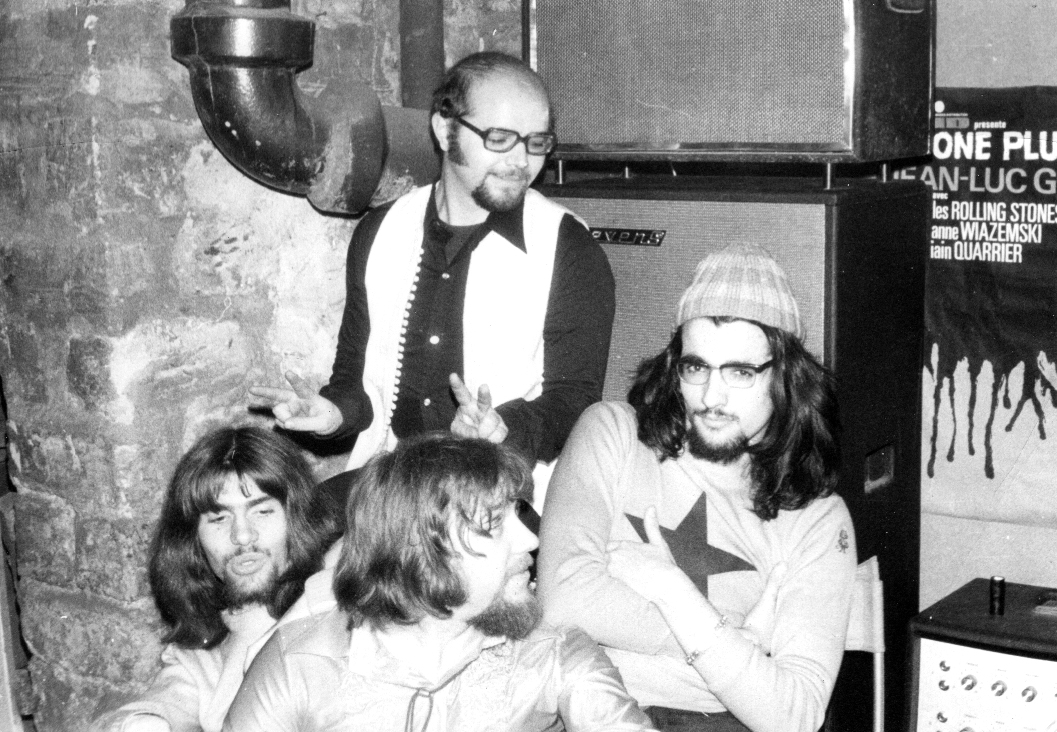
Another vivid memory, when we took our acoustic guitars (classical and 12 strings) to the Festival du Bourget to perform ‘Memories’, whistles sounded in the audience. Then it was one of the most applauded songs!
I also keep in mind the common work in rehearsals. And the Revox tape recorder, placed in the truck, with the cables coming out of the cellar… Sometimes we improvised for 2 hours and recorded everything. Then we replayed, watching for “the” theme that would be preserved and then developed.
The most representative track of MGP is undoubtedly ‘The World of Genius Hans’. By, the sound, the complexity and its duration of 14 minutes. With hindsight, I regret a little that the themes were not a little more developed, but the piece would not have held on only one side!!!
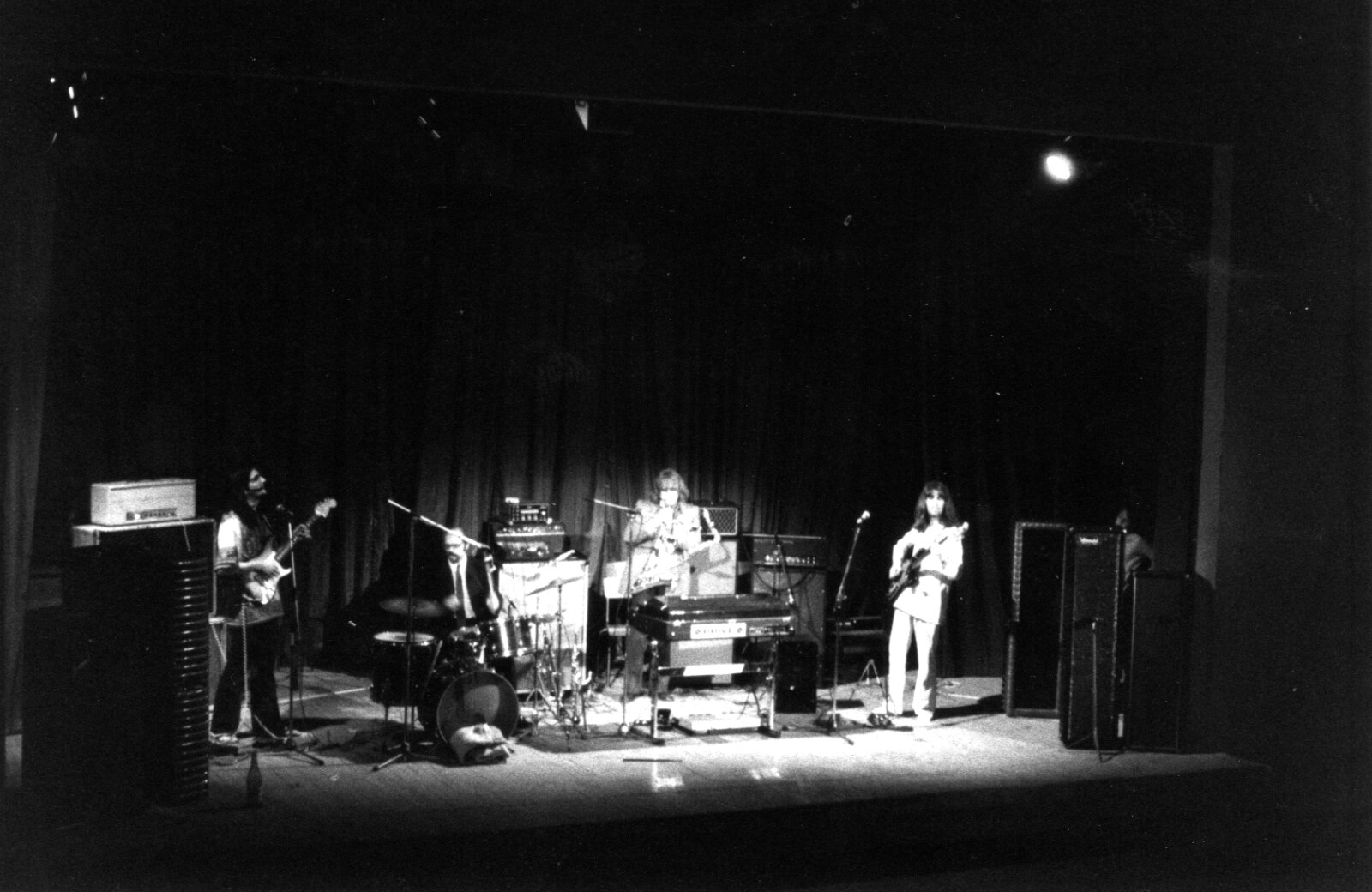
Thank you for taking your time. Last word is yours.
It was with great pleasure that I answered your questions, which allowed me to remember good moments of music, but also of friendship.
It has been 50 years since the adventure began at Le Bourget. It’s hard not to feel a certain nostalgia, but my passion for music is immortal, and I’m always on the lookout for new experiences and eager for new projects … Didier Thibault
Klemen Breznikar
Moving Gelatine Plates Facebook
Monster Melodies Records Official Website



